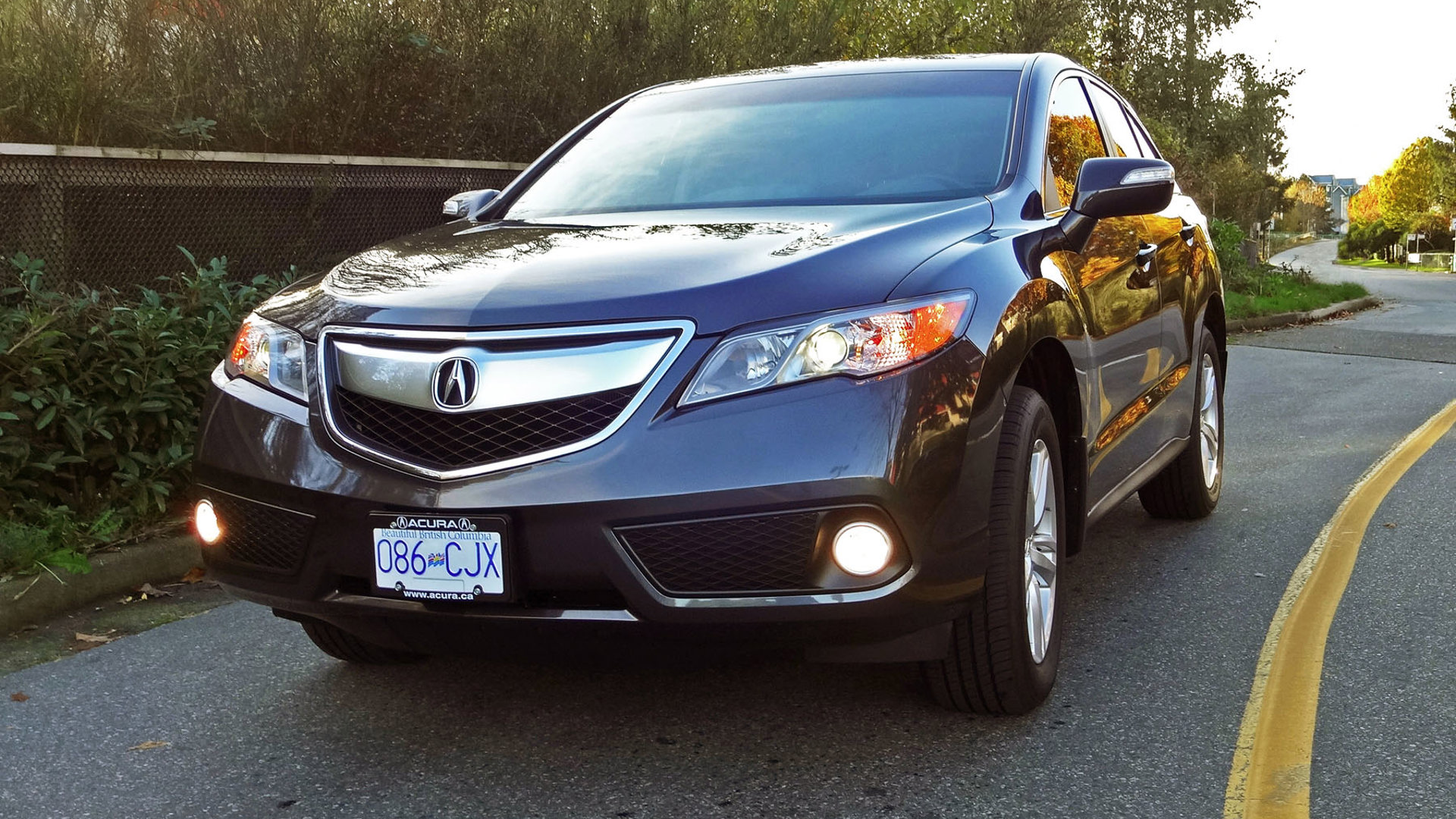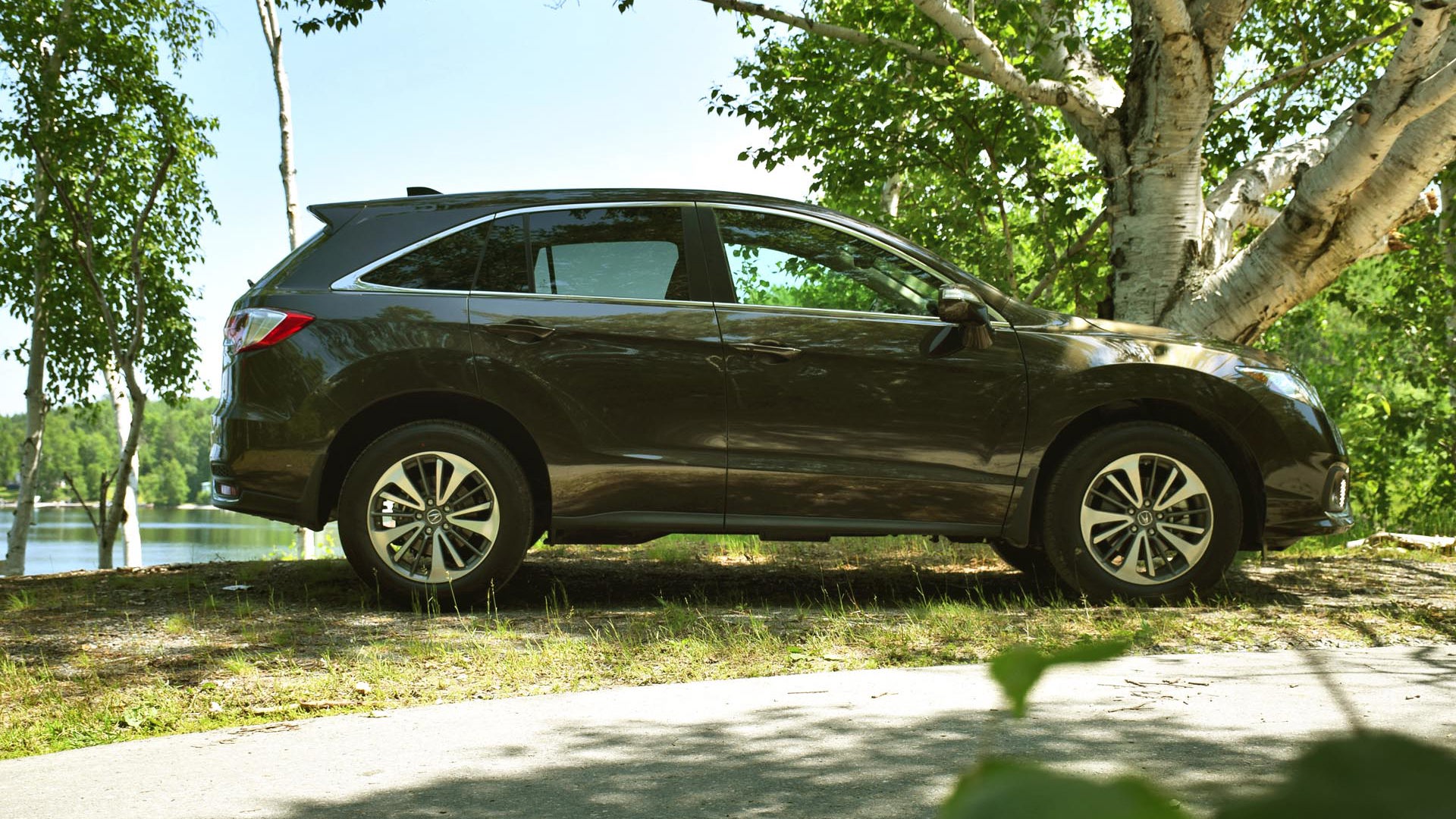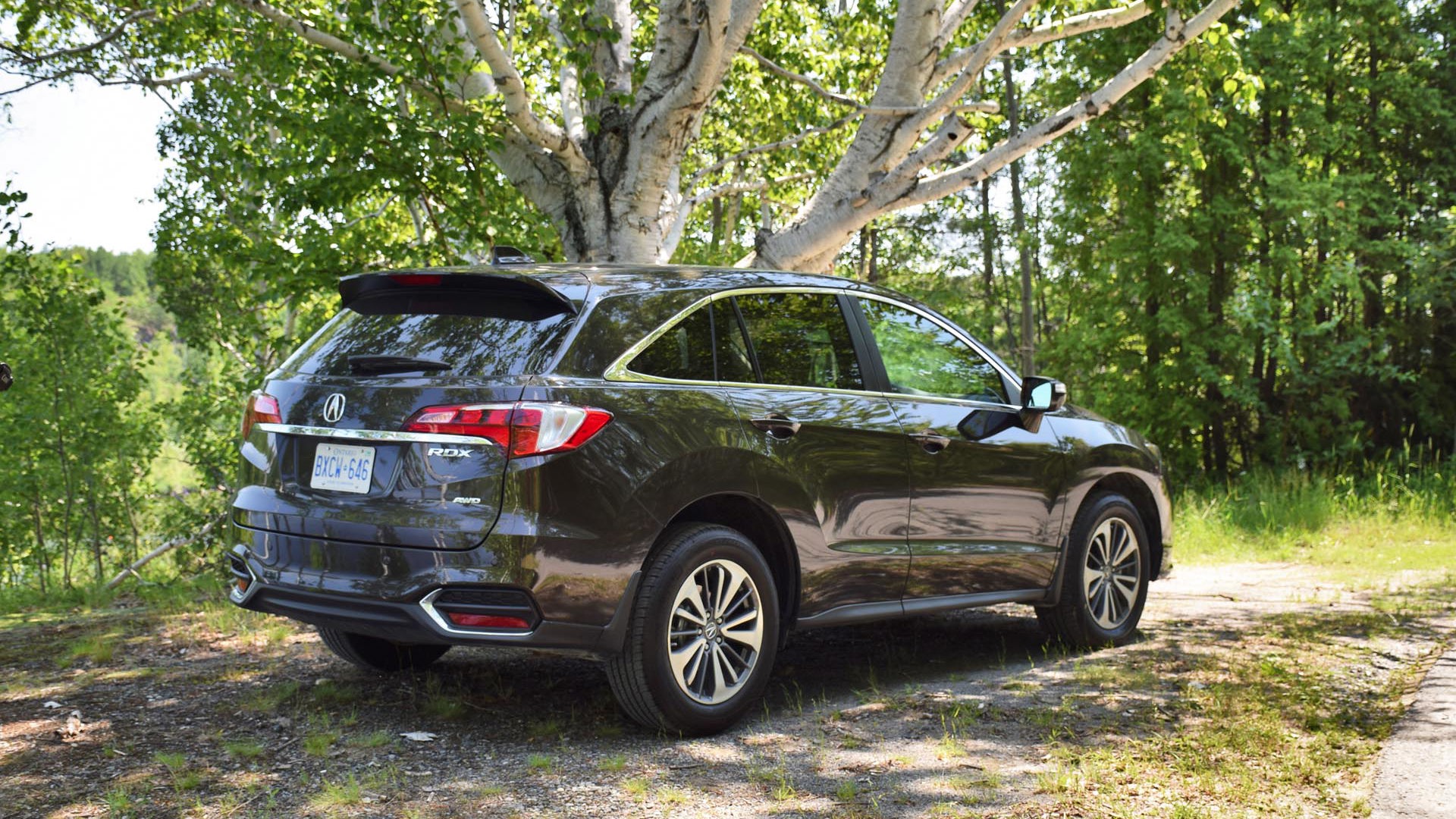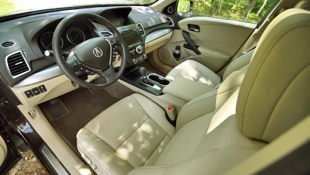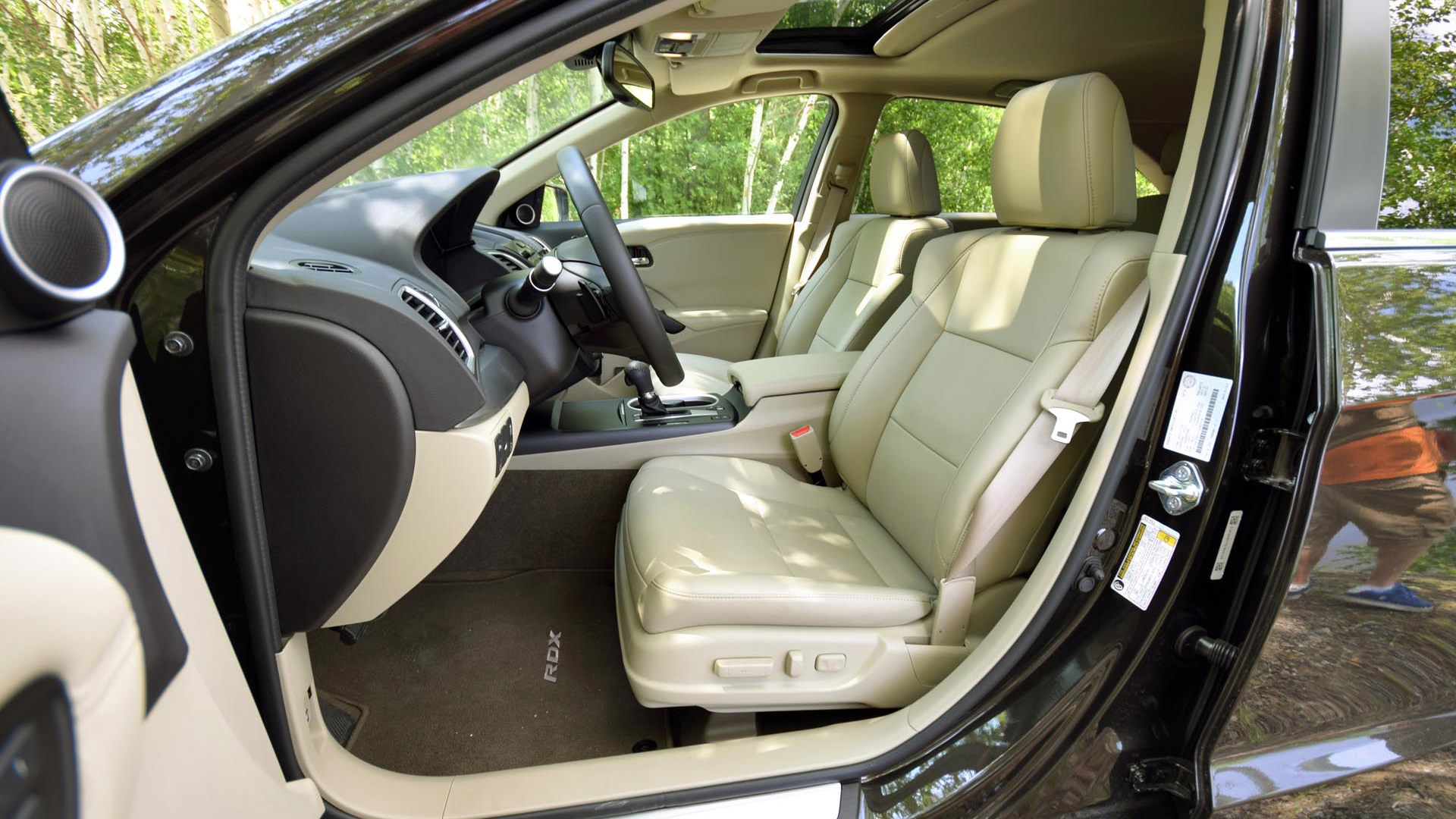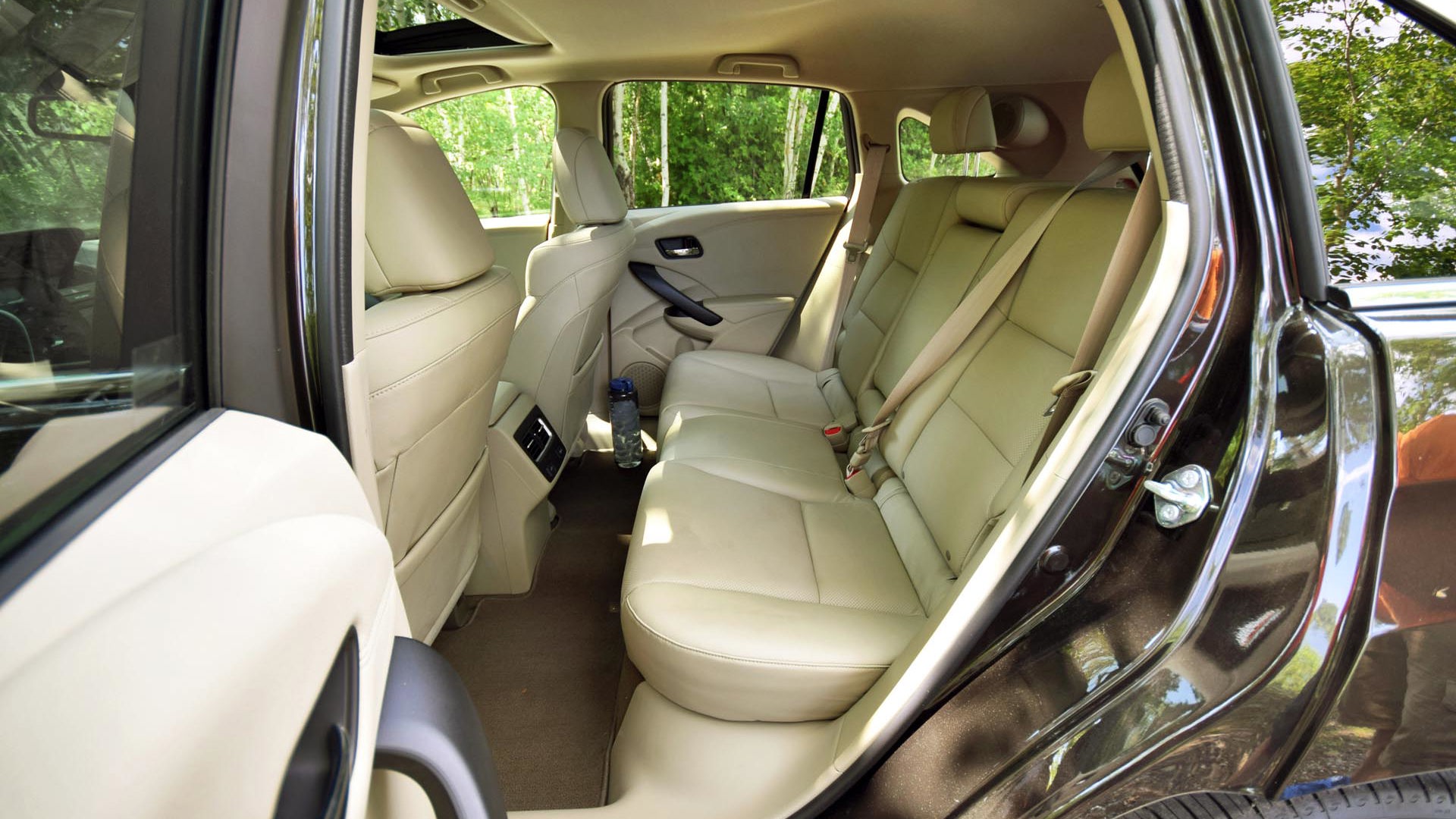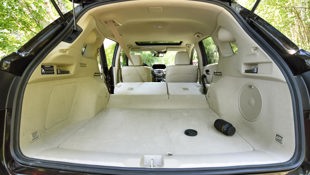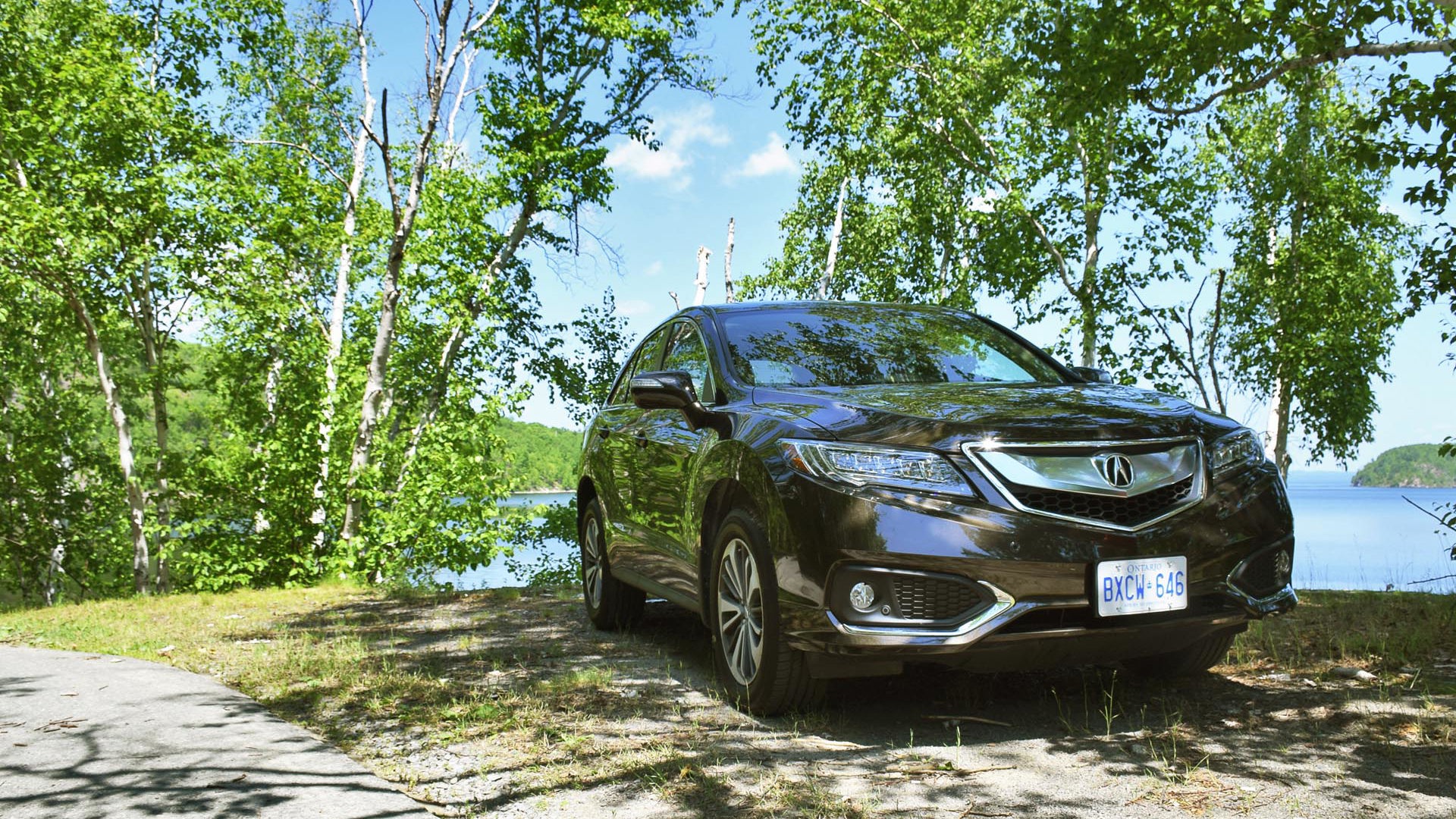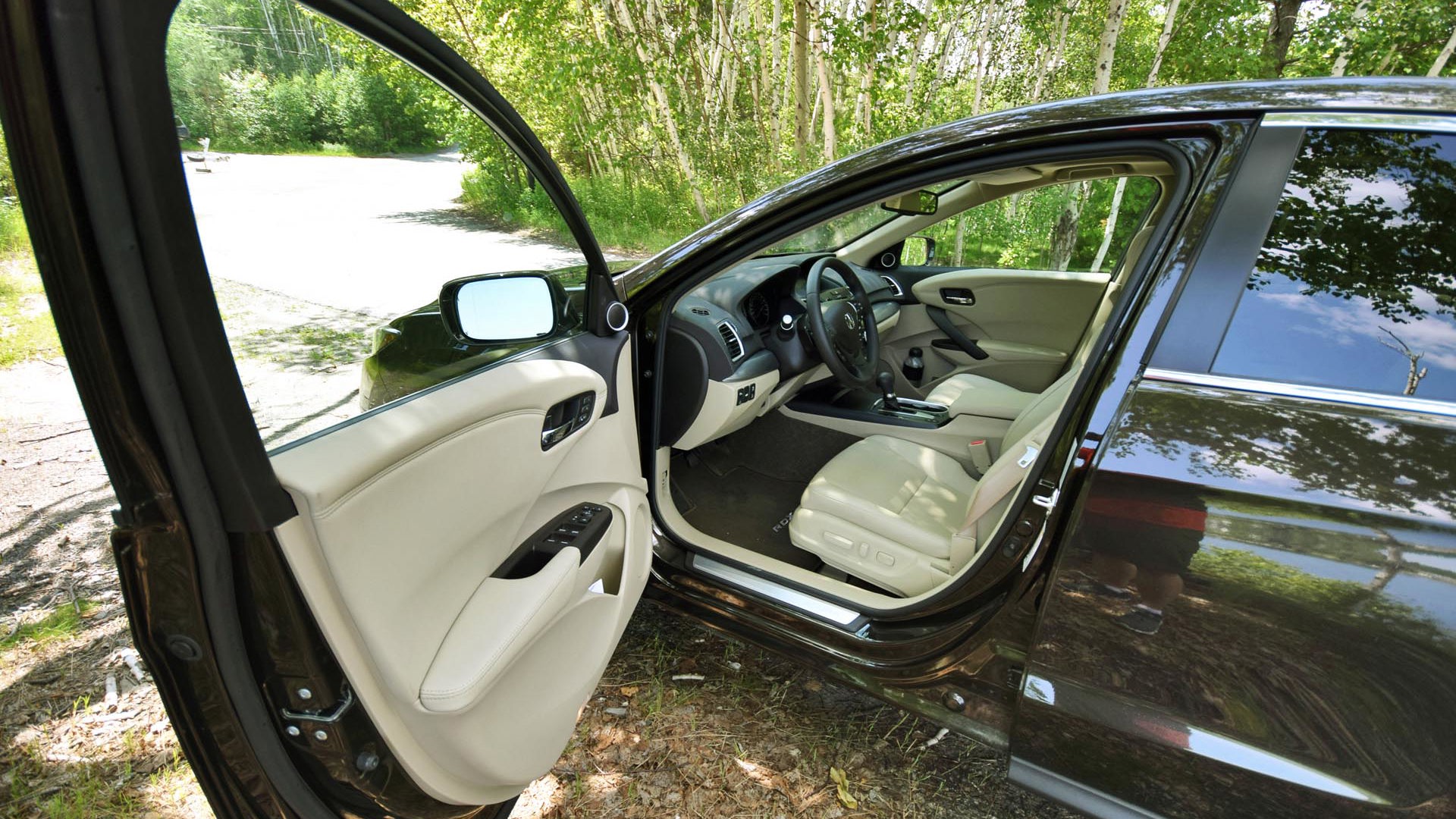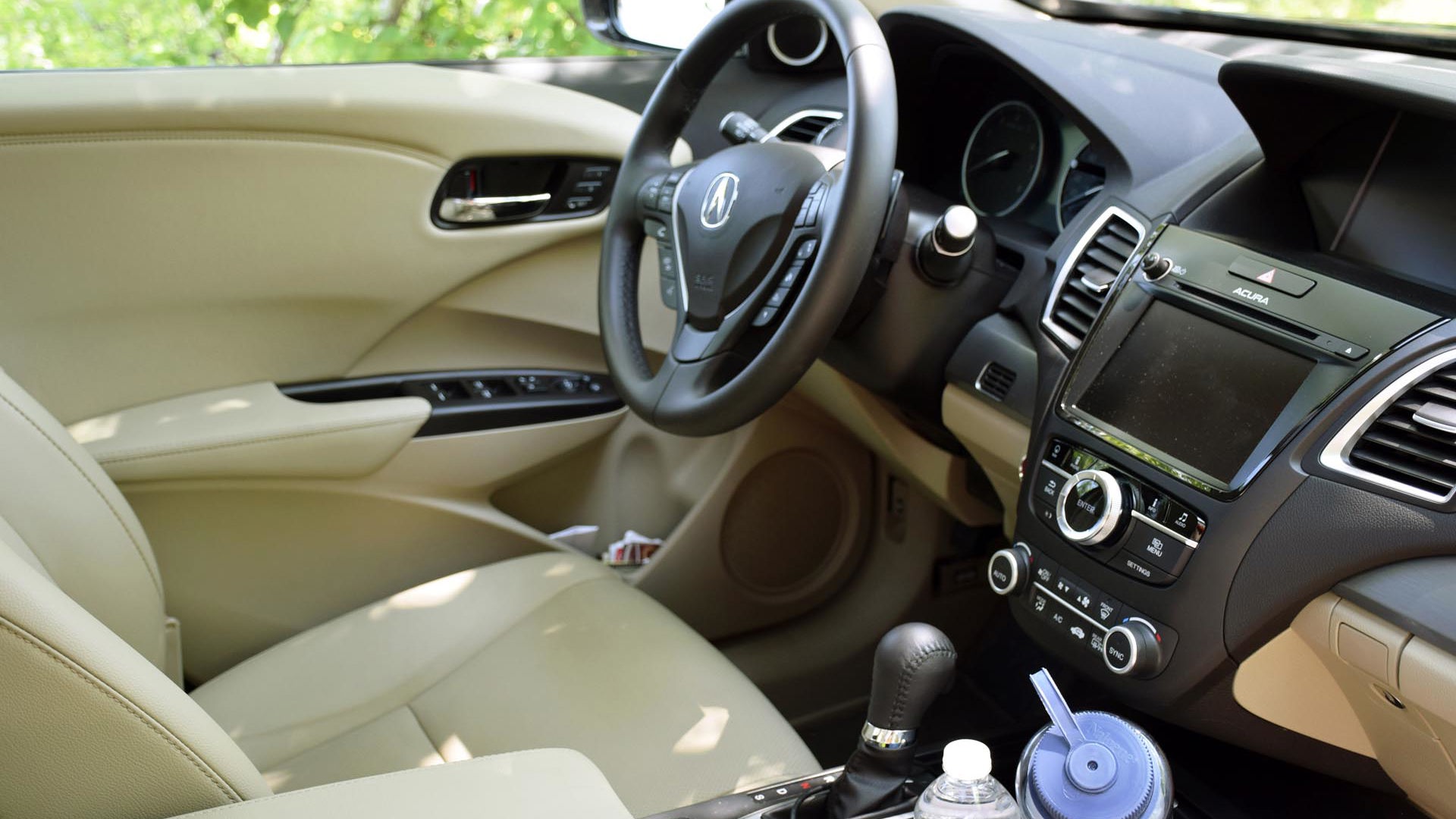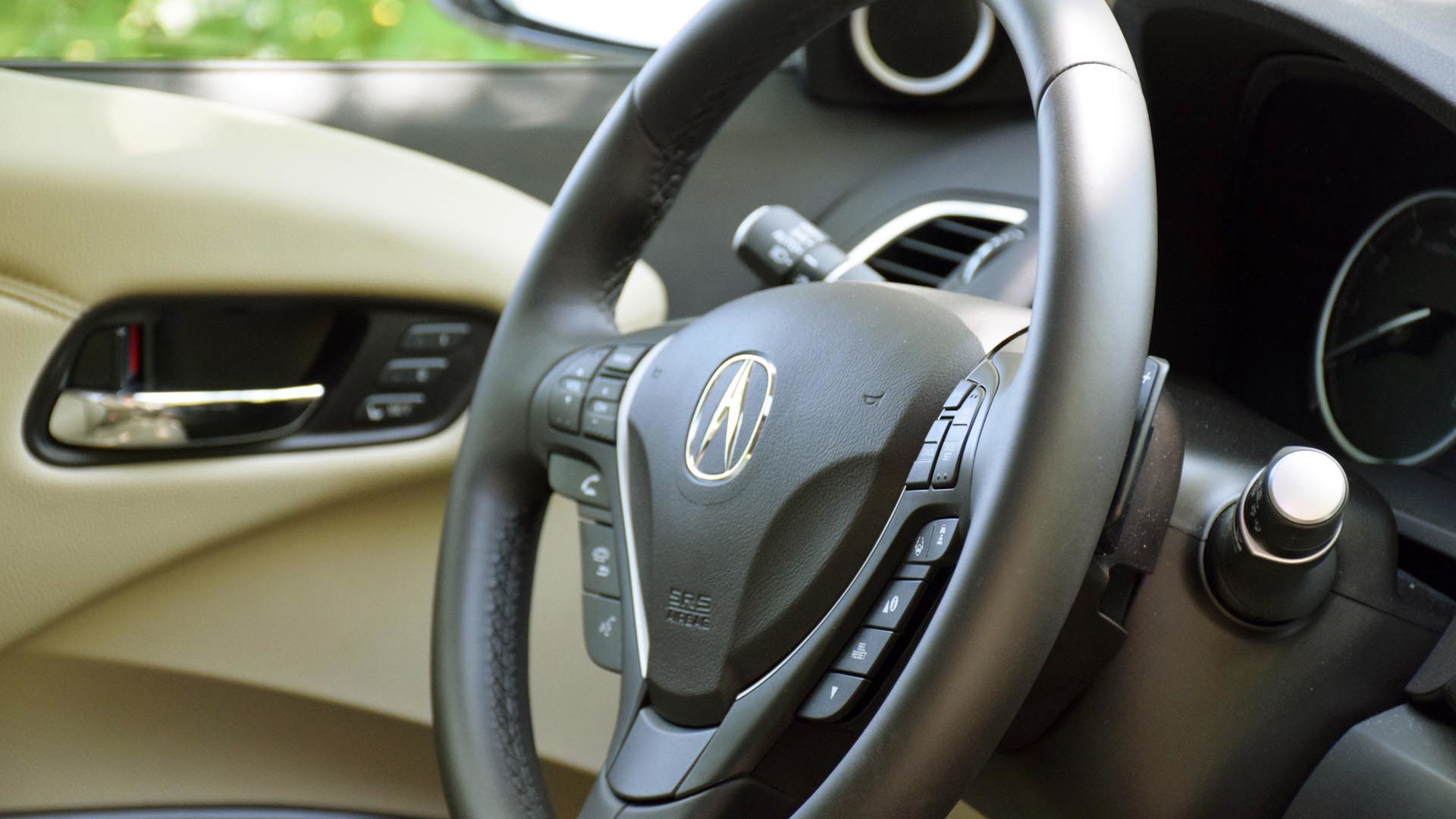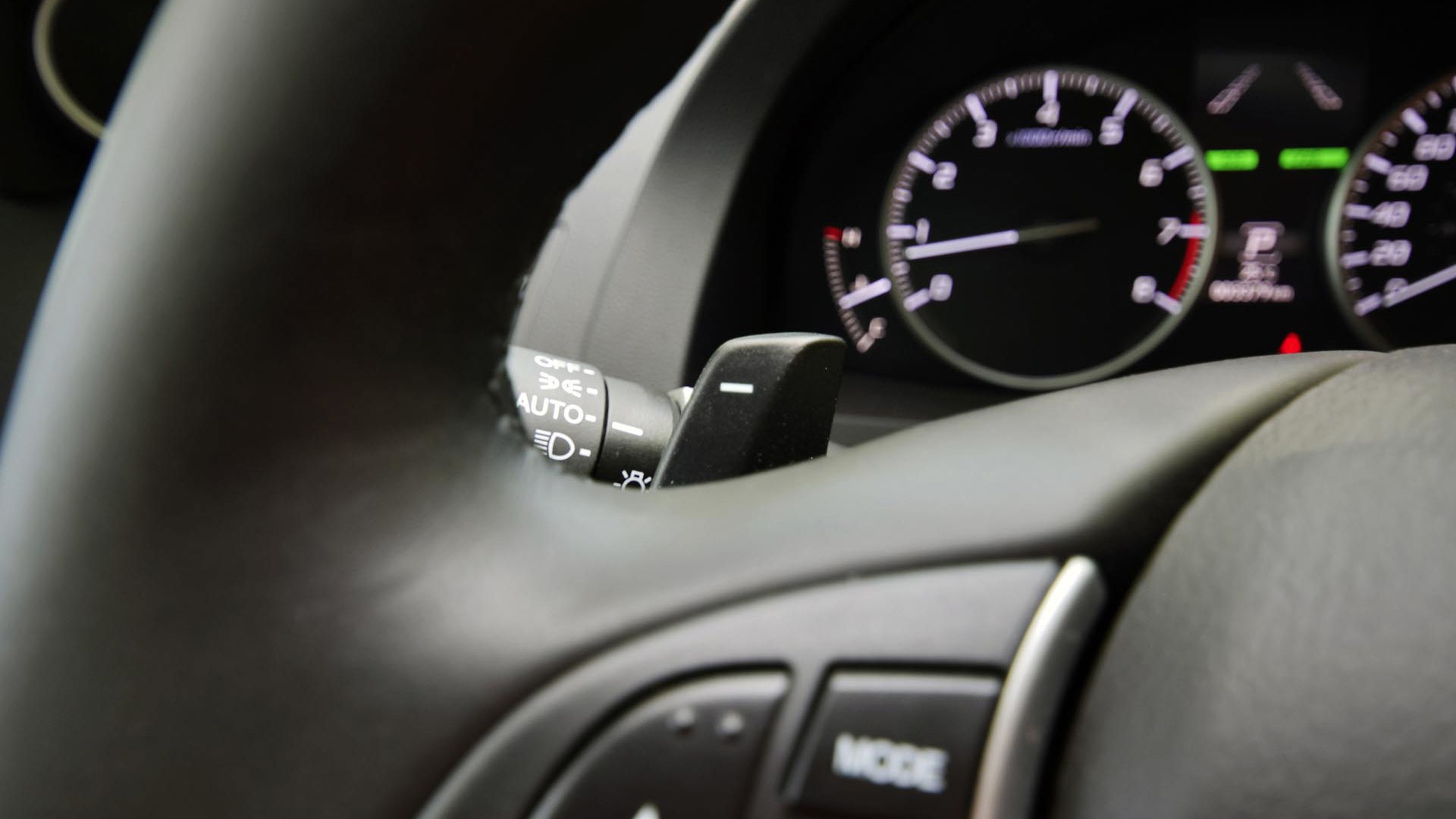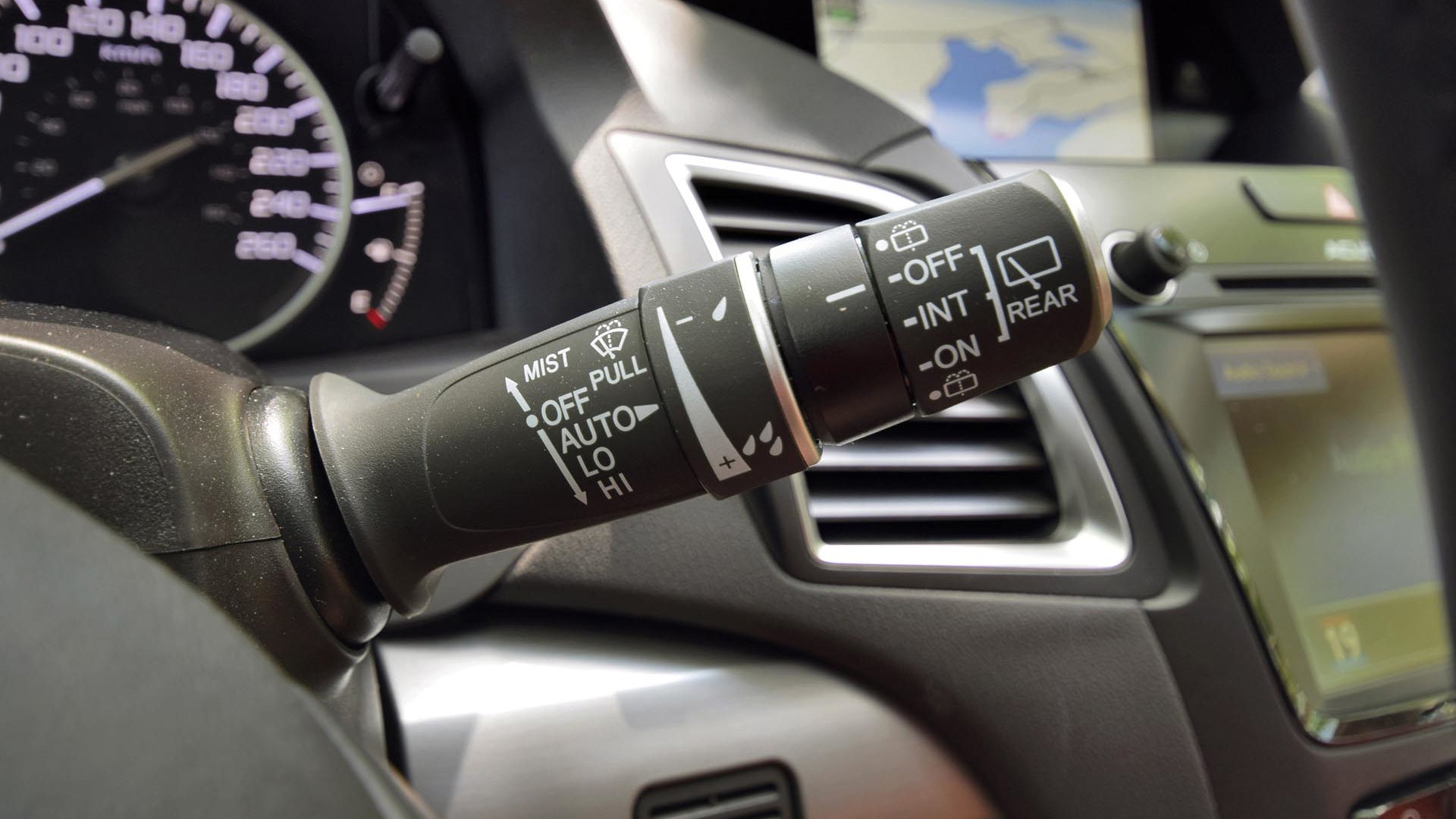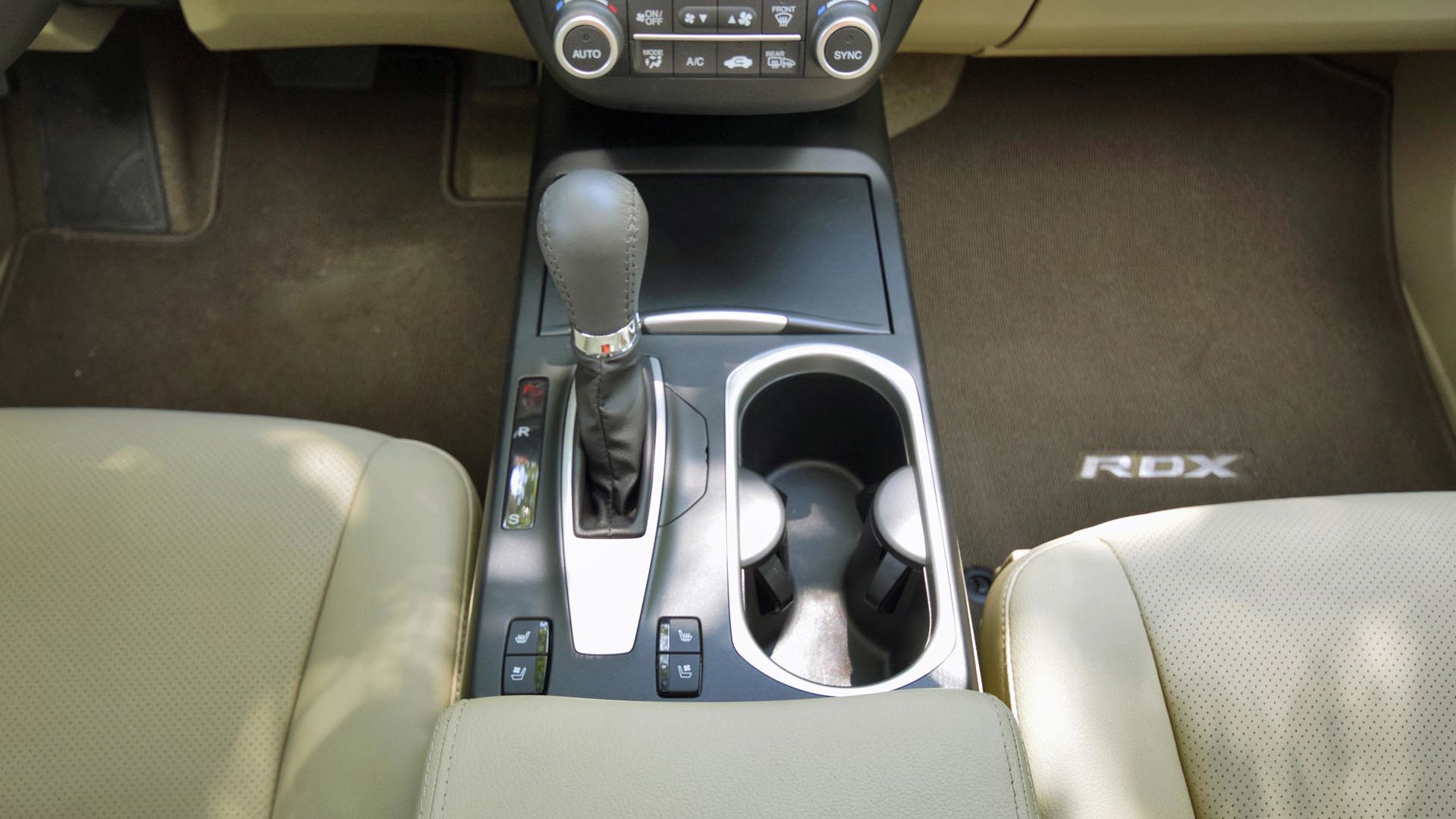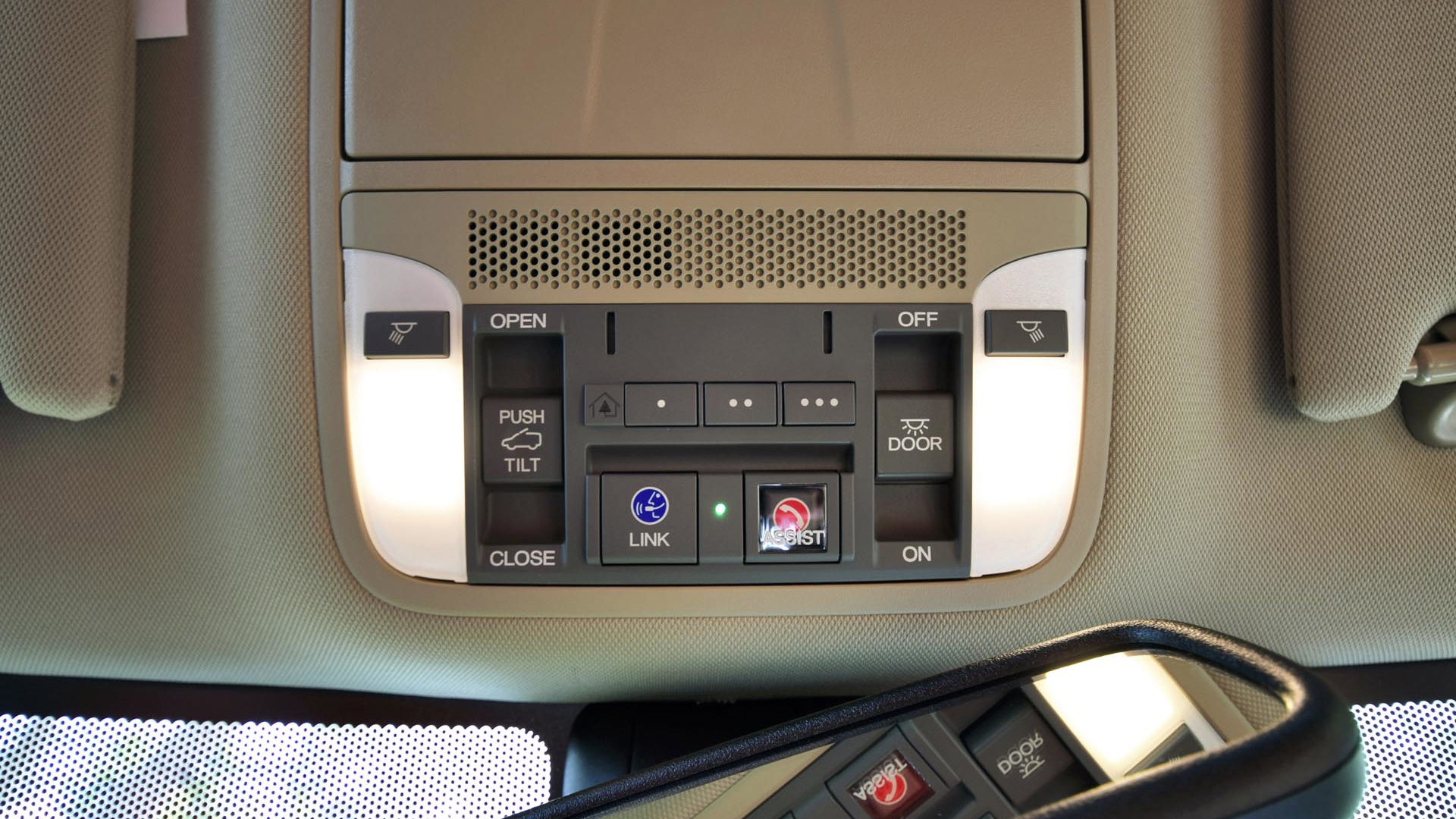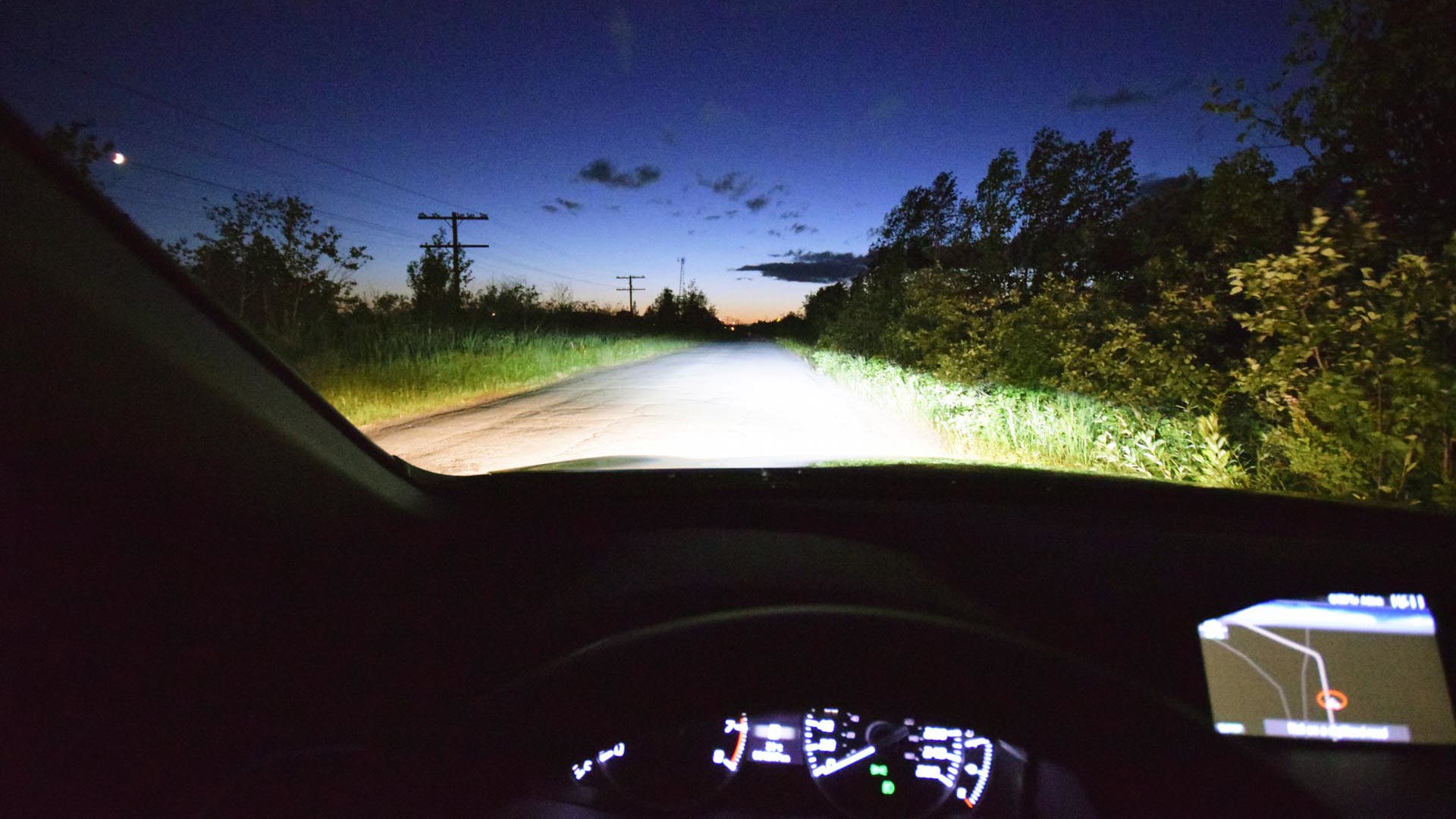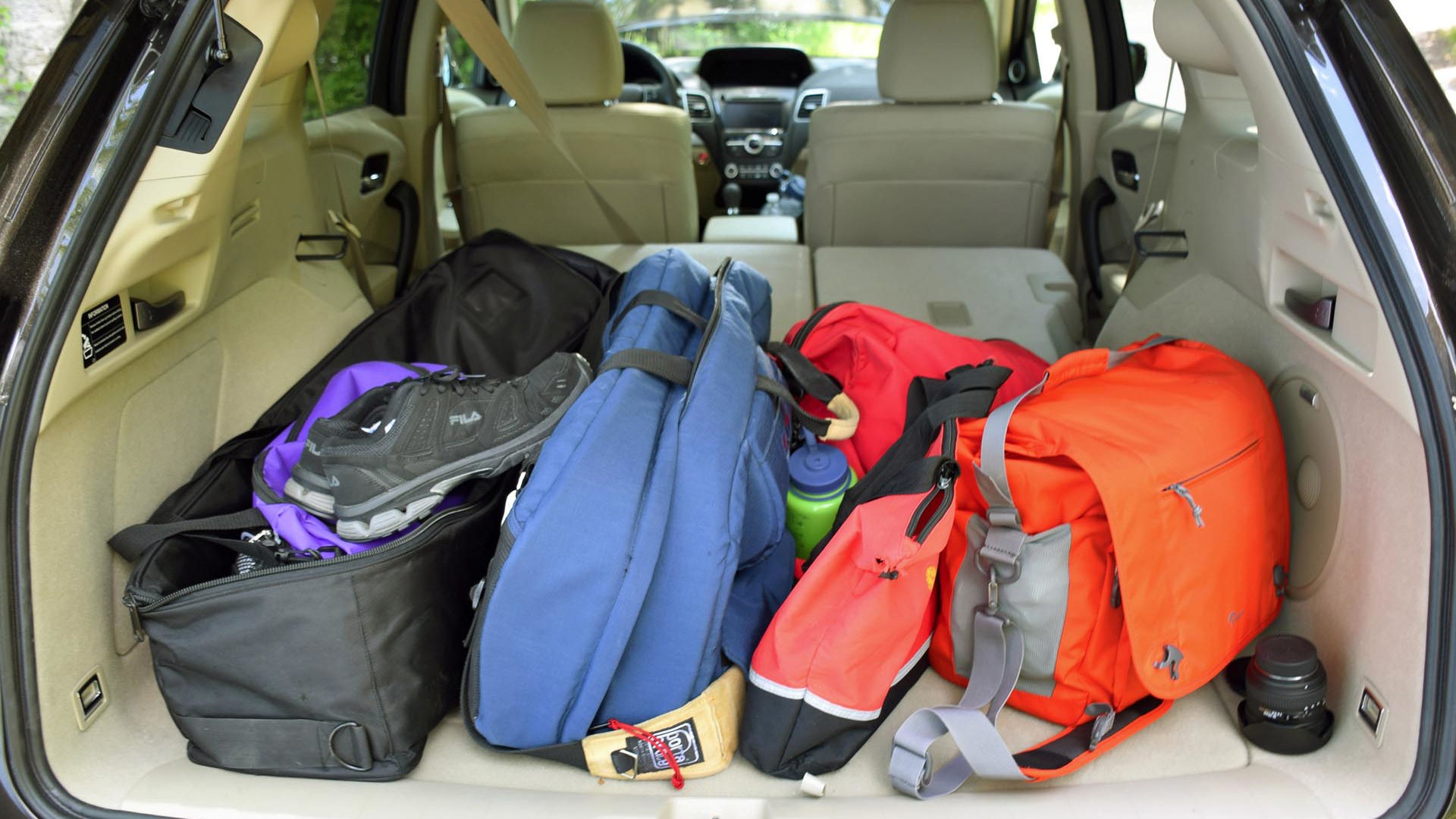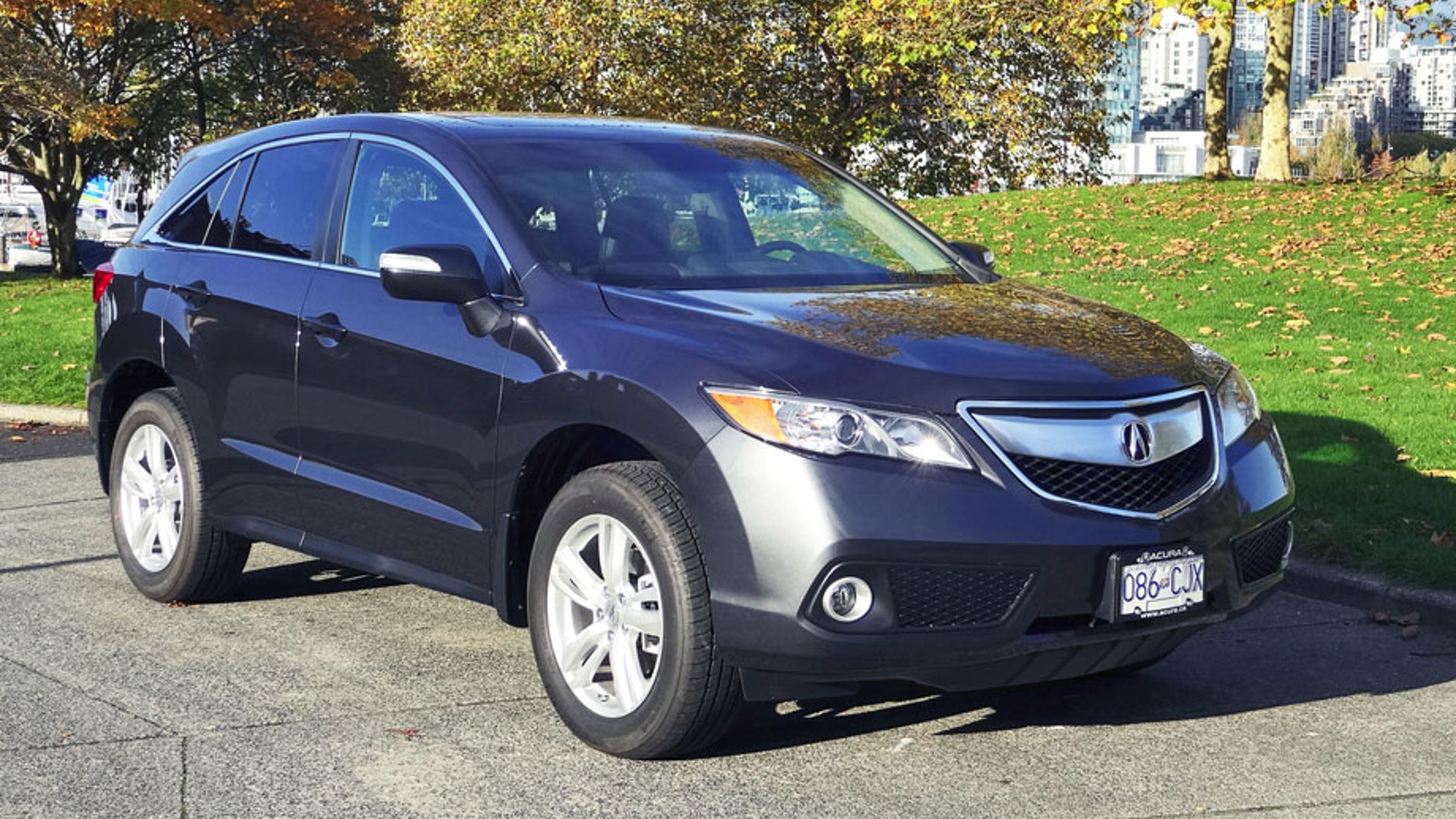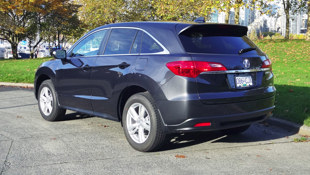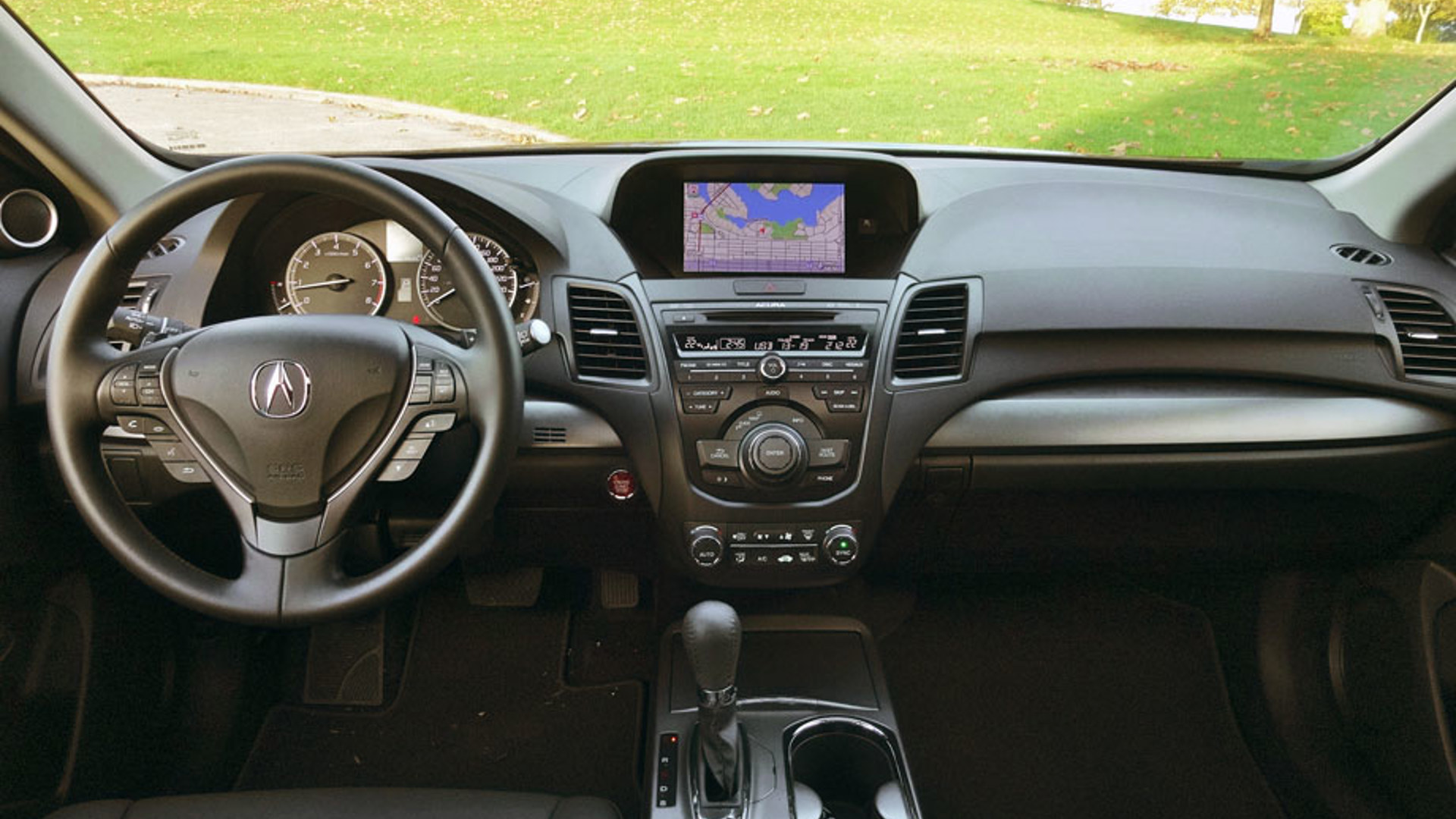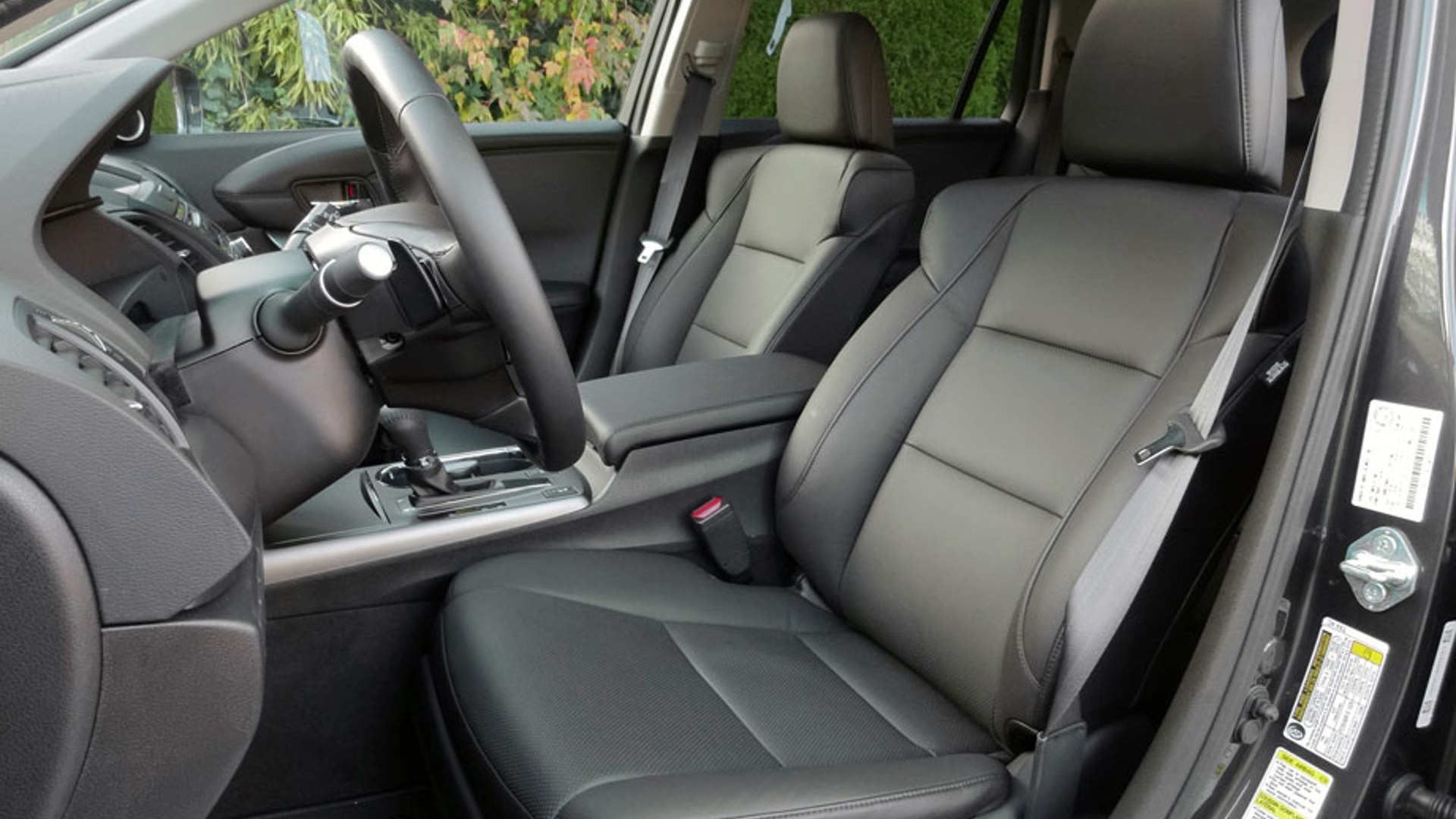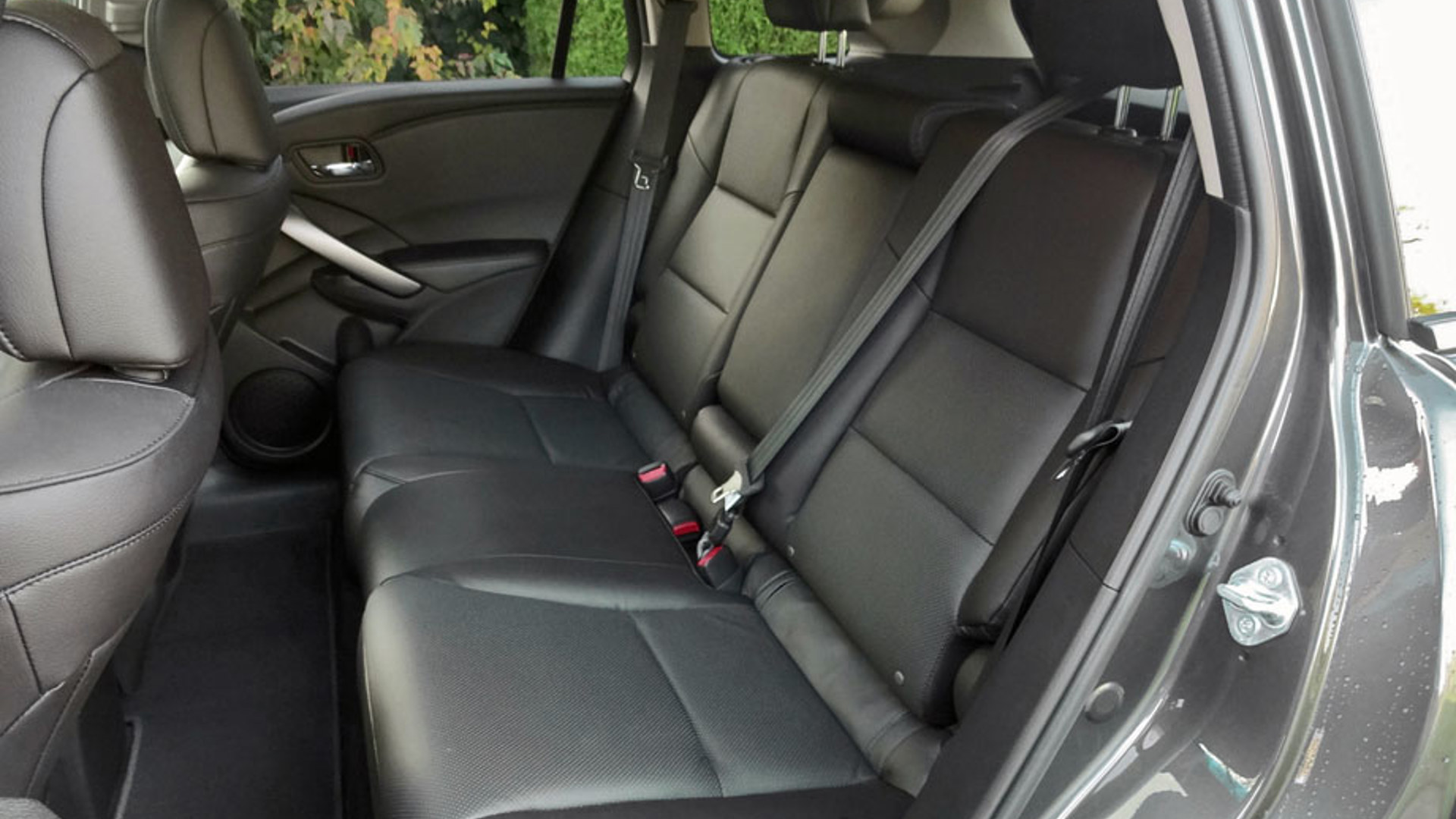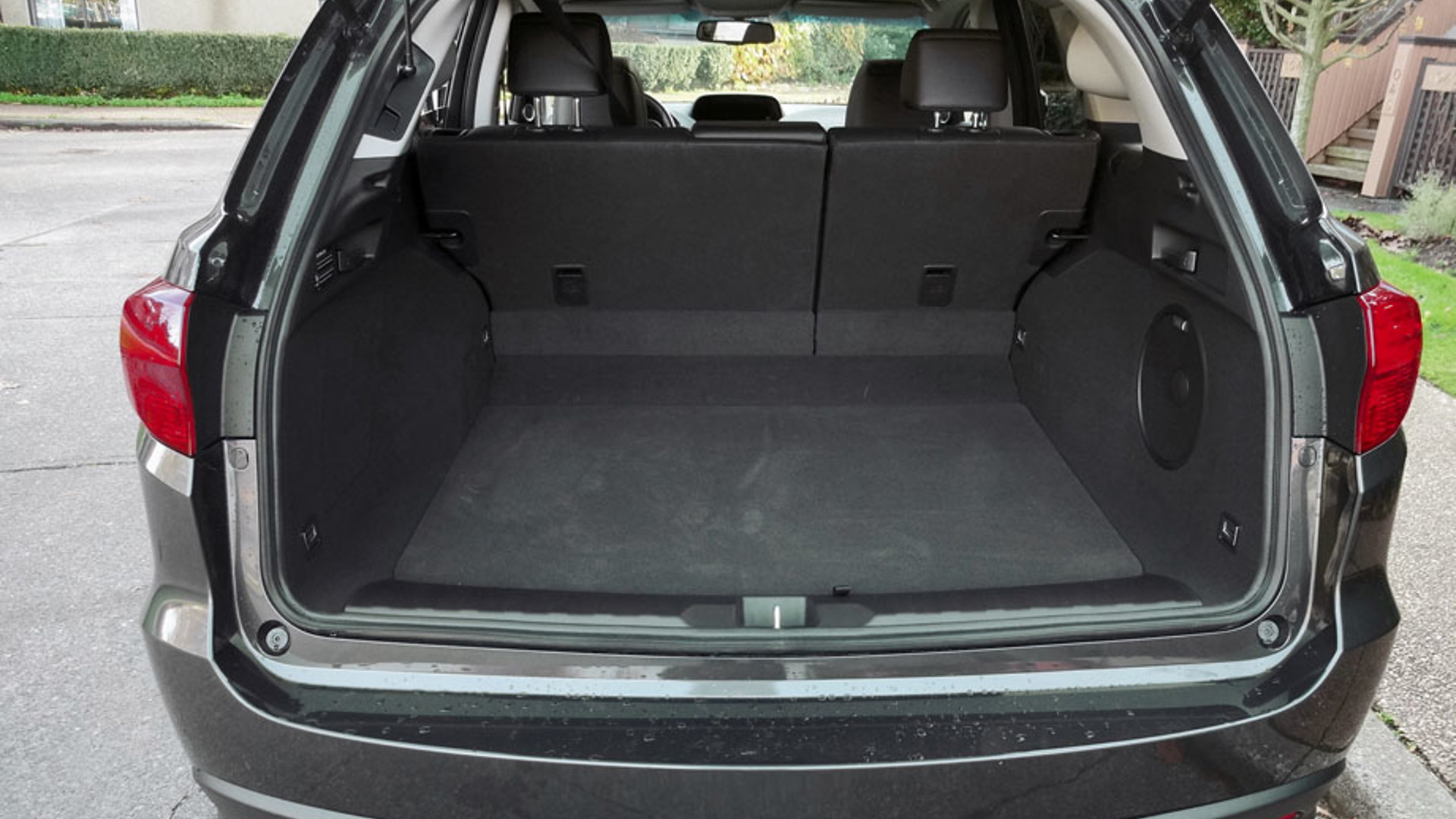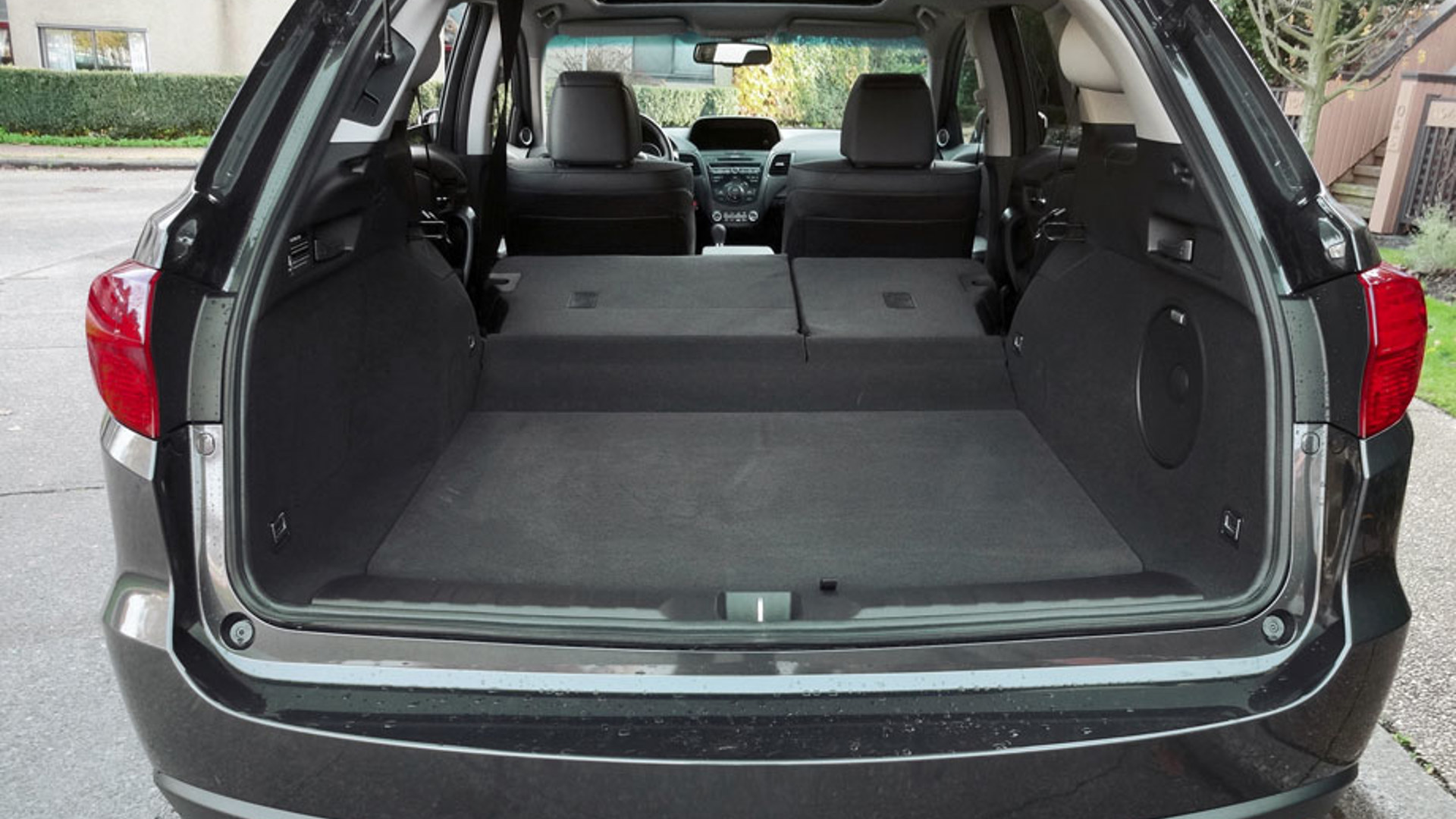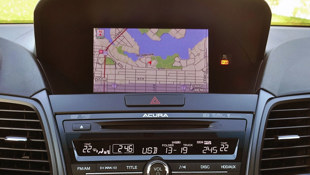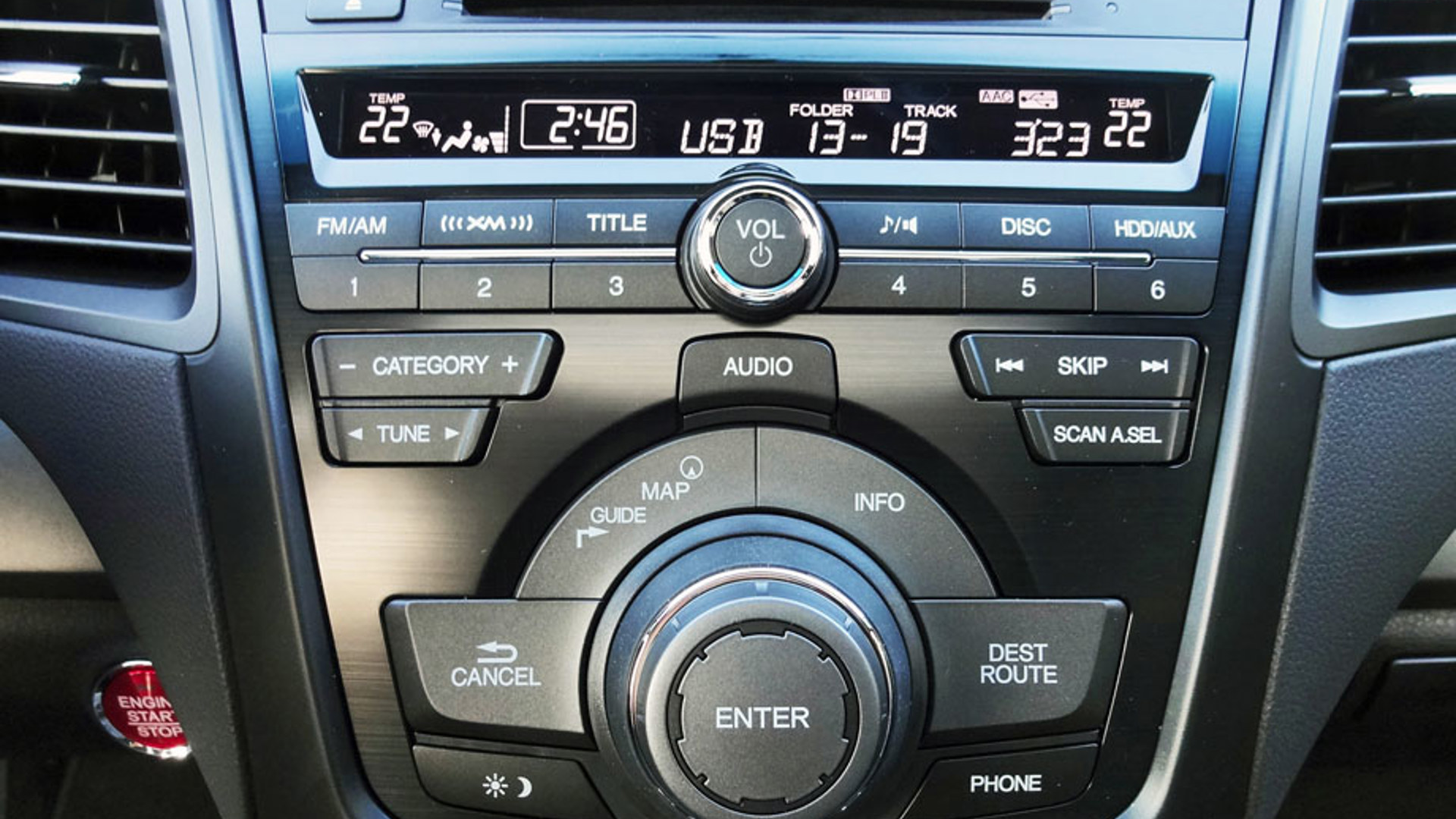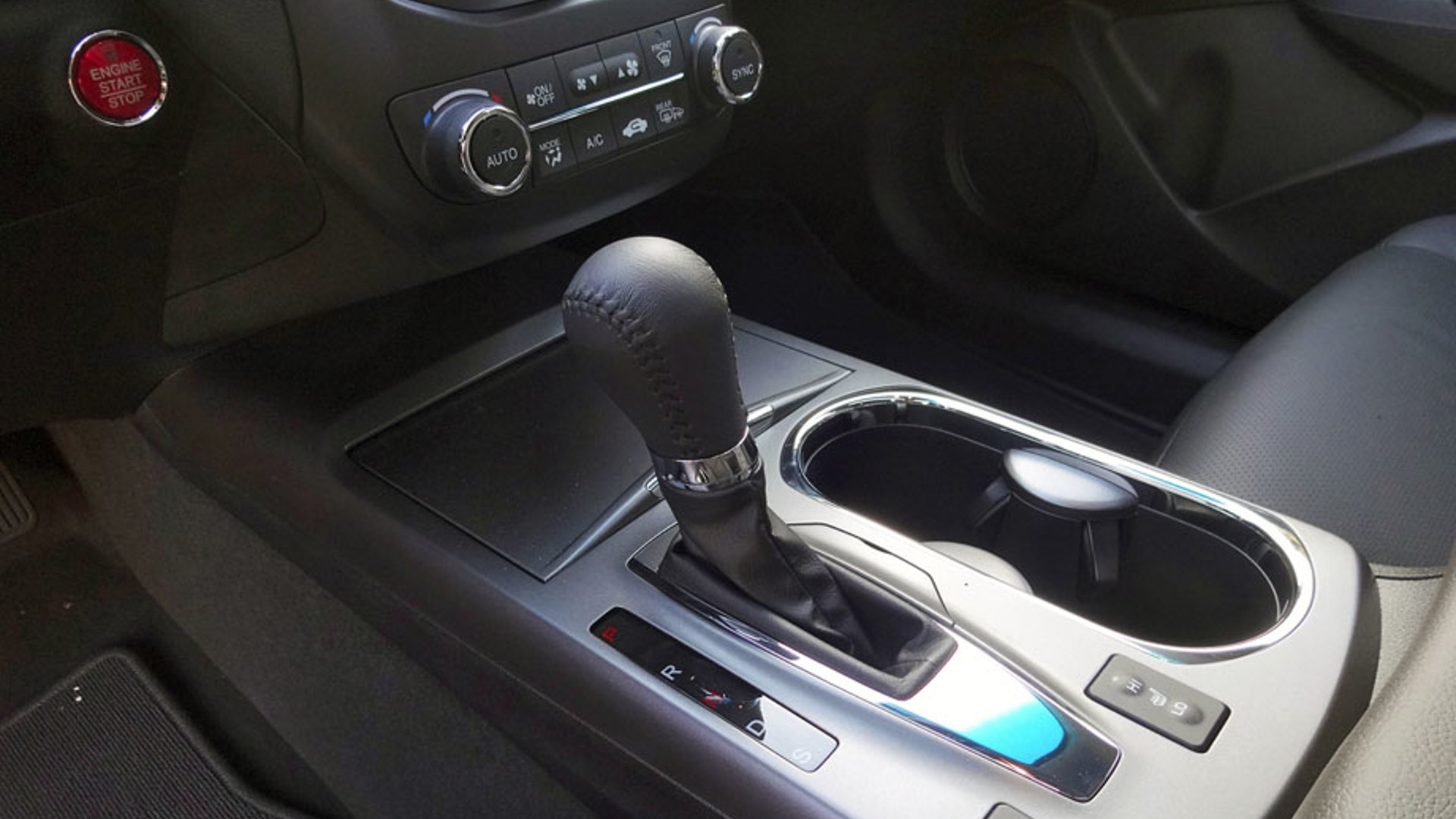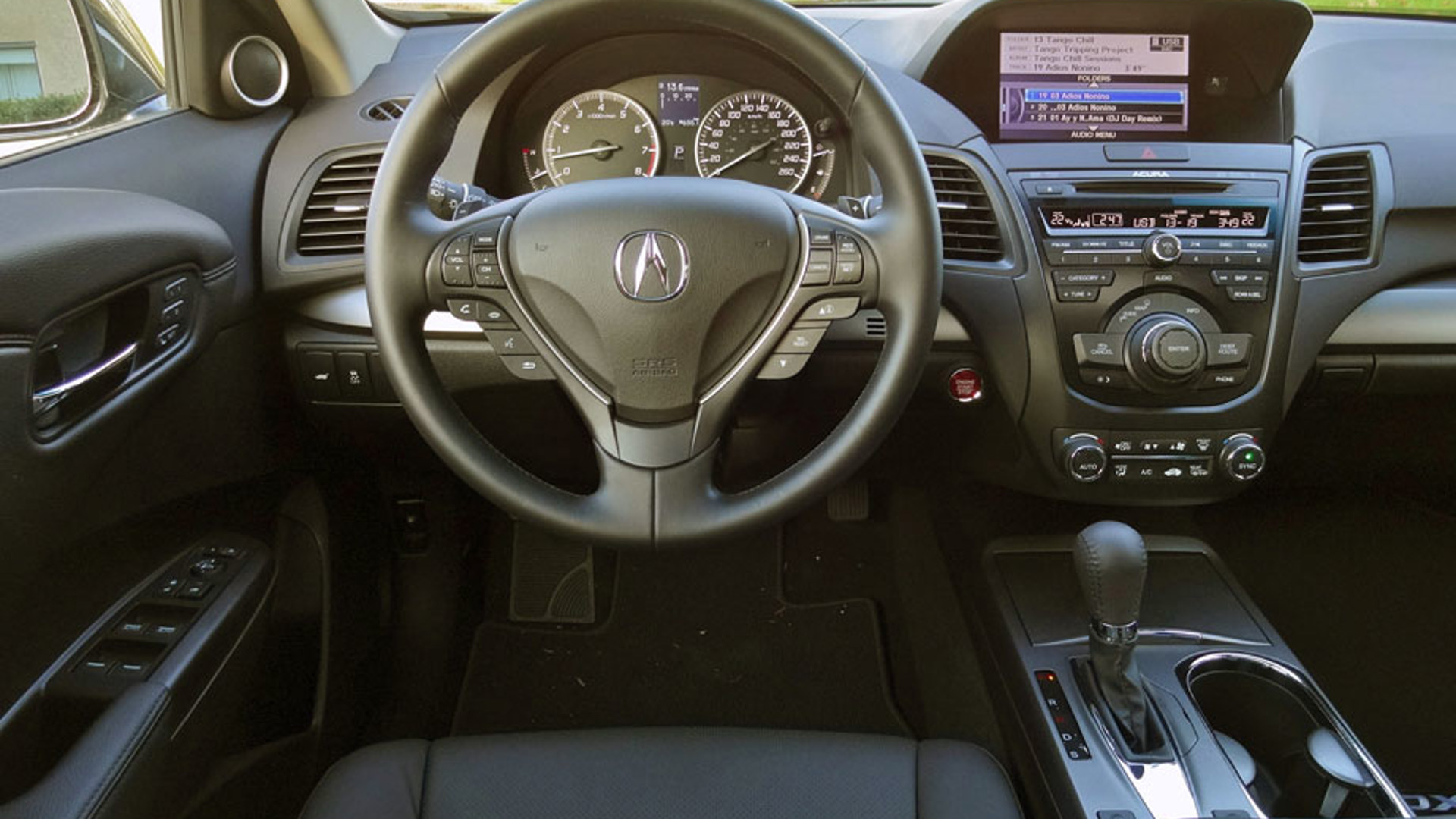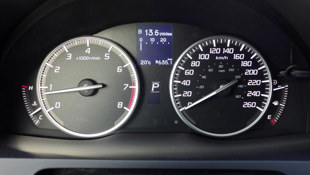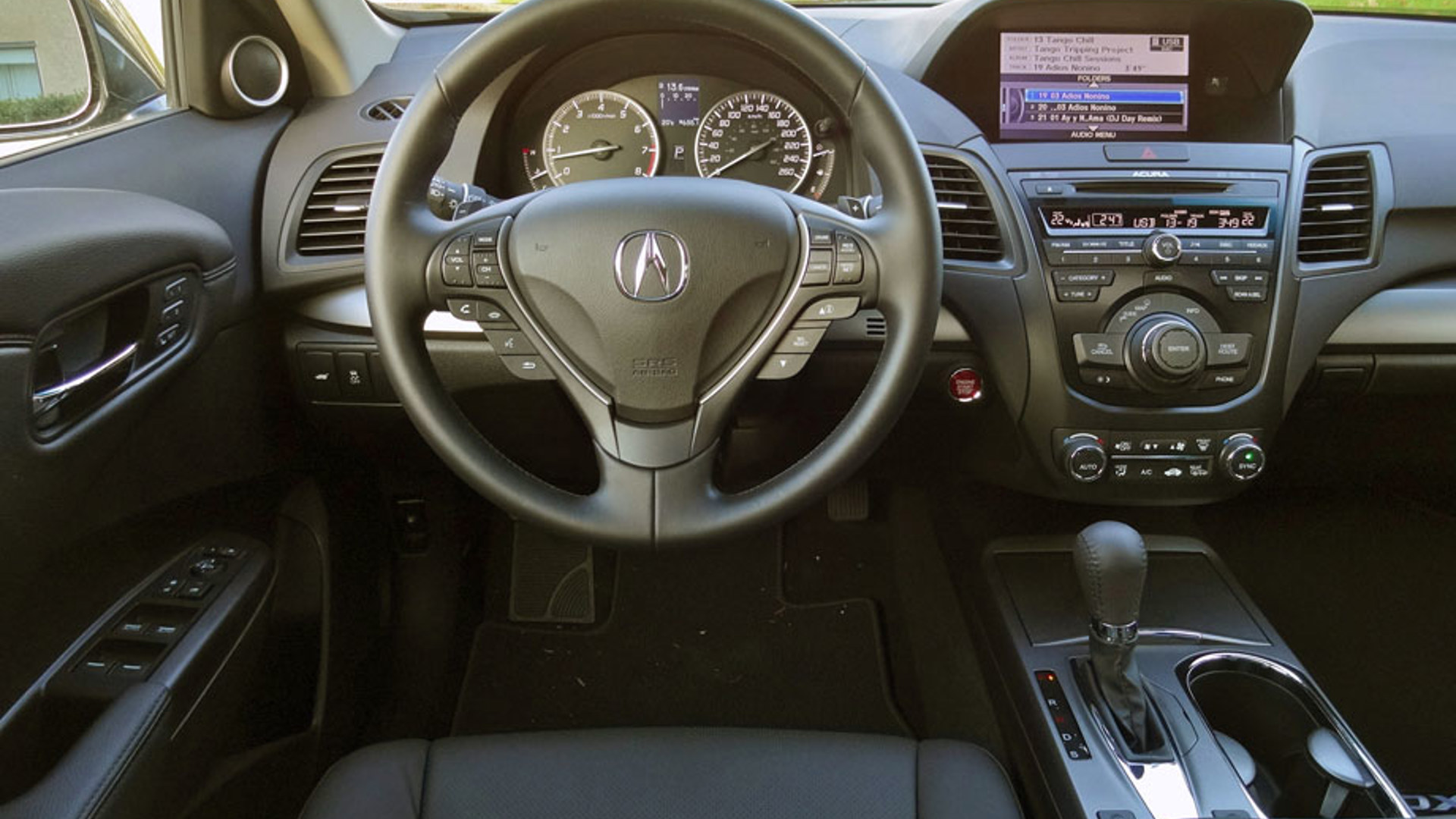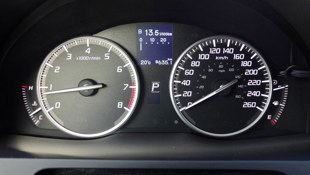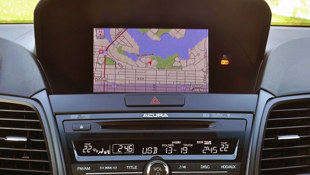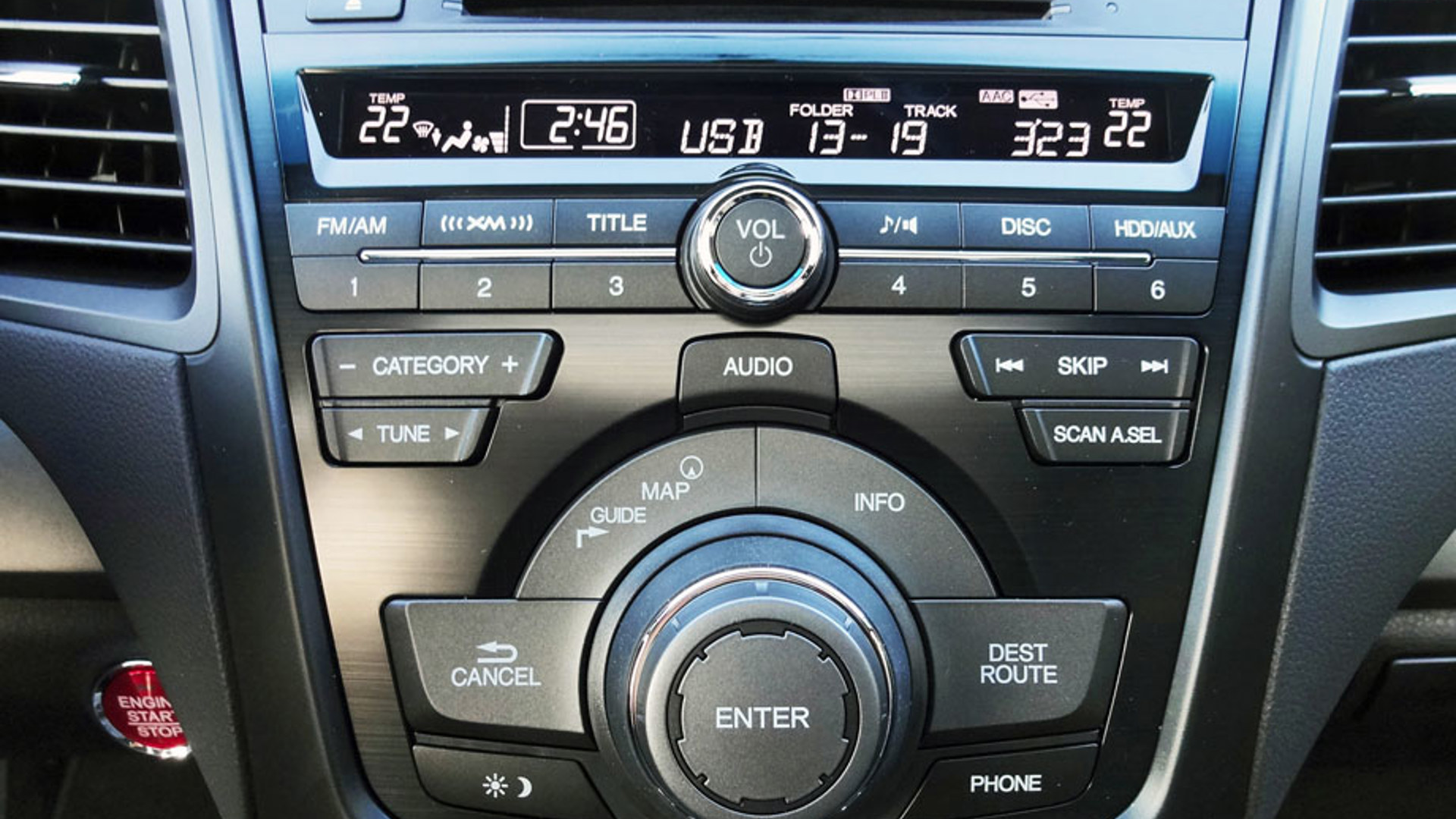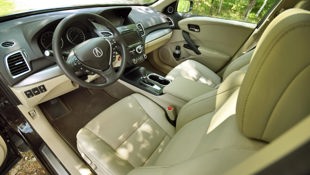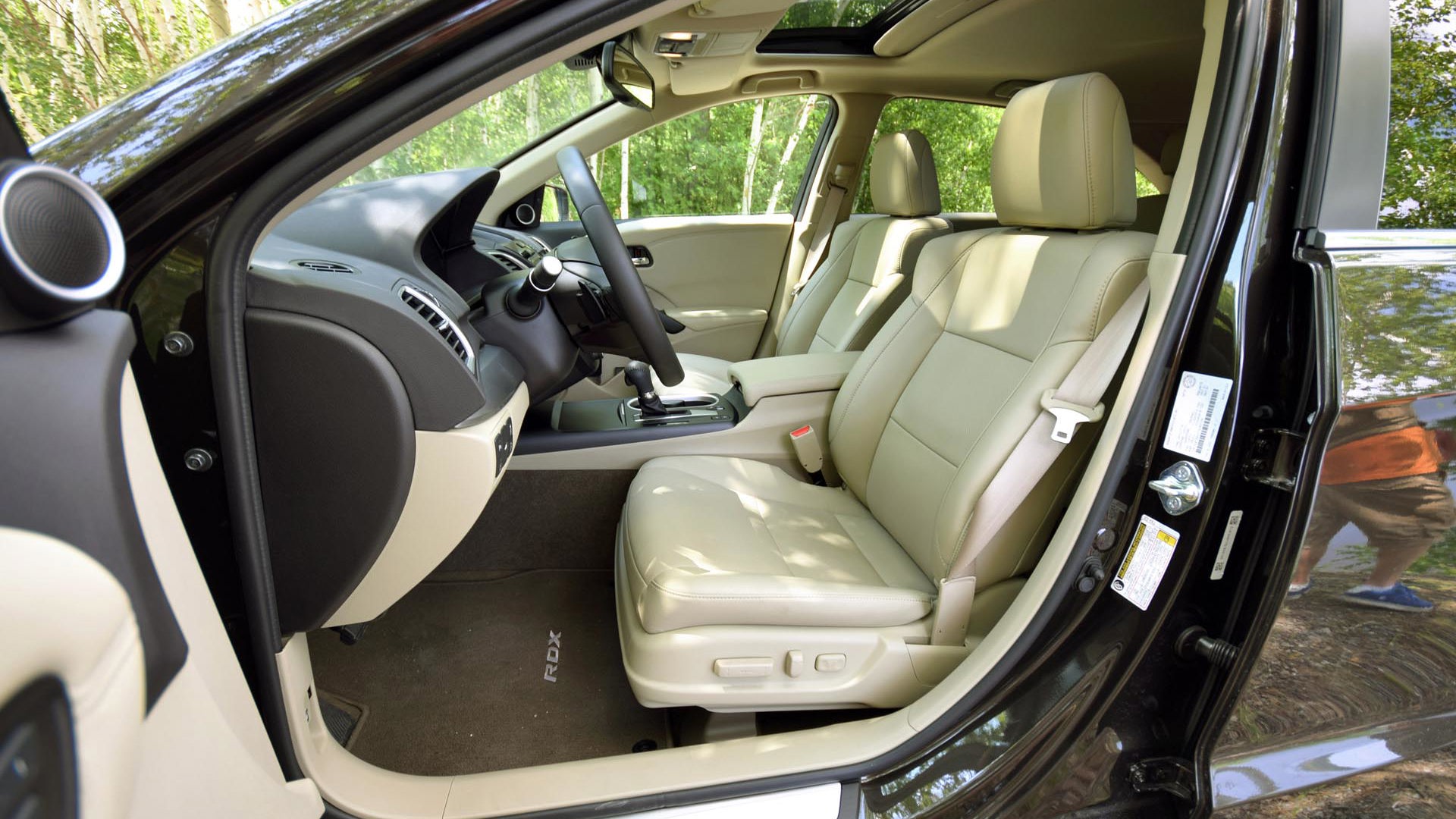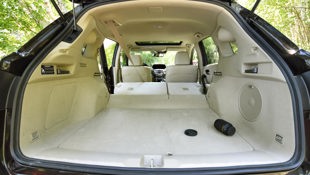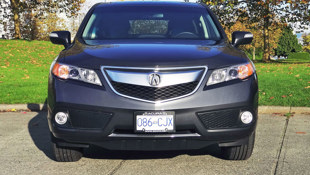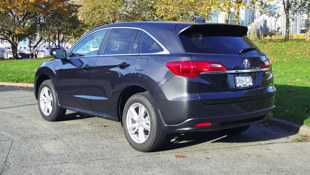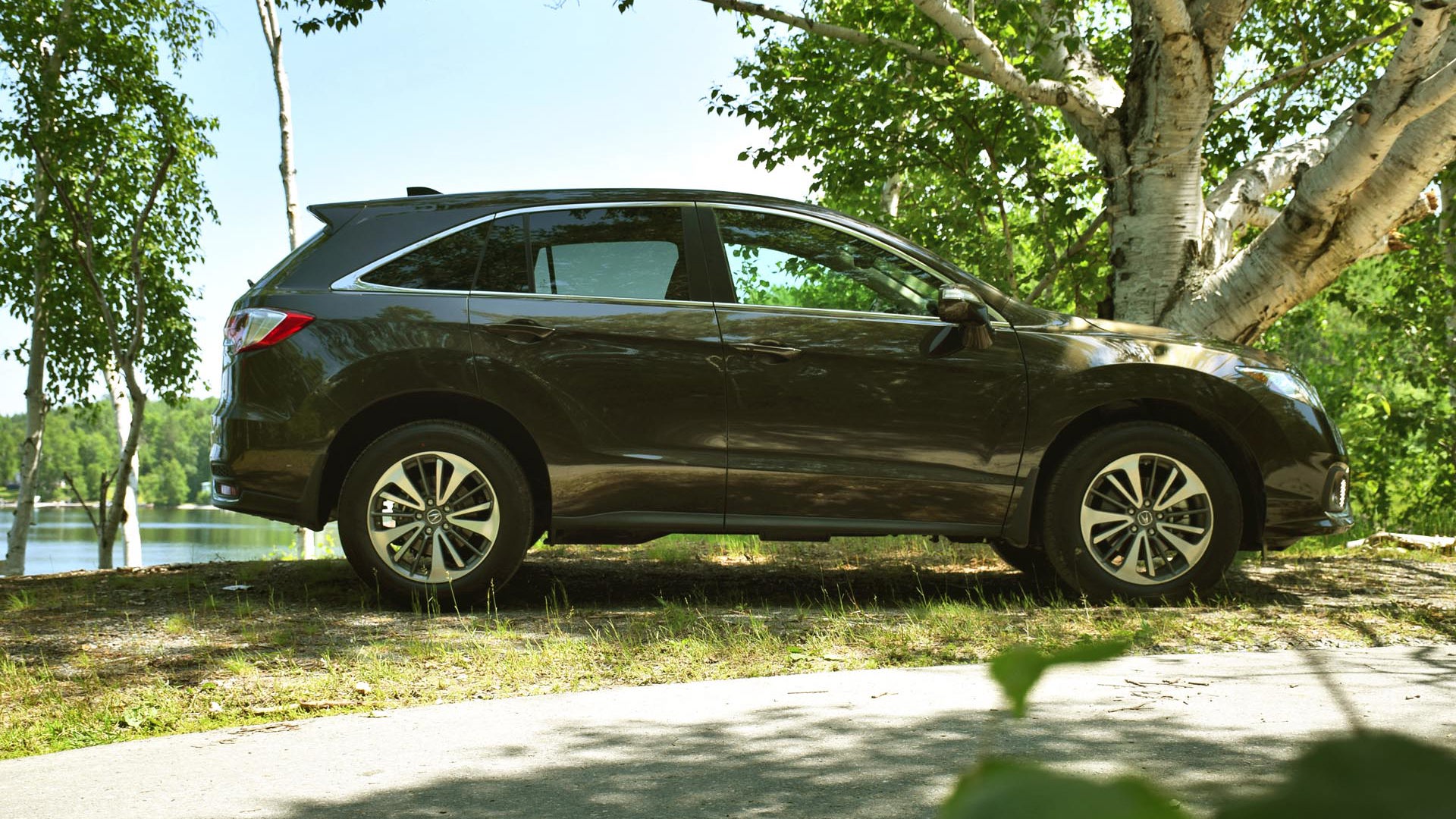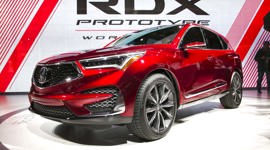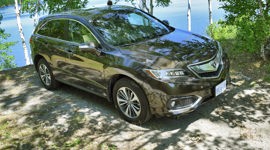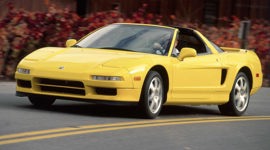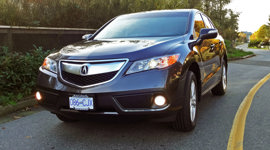Vehicle Type
Roomy and flexible interior, good ride quality, a nicely trimmed and luxurious cabin, a smooth and punchy engine, generous cargo space, and all-weather confidence.
Compact Luxury Crossover
History/Description
The second-generation 2013 Acura RDX launched in 2012 with standard V6 power, new styling, new efficiency, and a new chassis designed to turn the dial up on refinement and comfort. With the just-released third-generation RDX heading to dealer lots now, the second generation of Acura’s sales superstar has now moved fully into used vehicle territory.
Second-generation RDX models got all-wheel drive (AWD) with the Intelligent Control System for decision-free, fuss-free traction on any road surface or trail. Also standard: a power moonroof, potent xenon HID headlamps, Acura’s HandsFreeLink wireless phone system, push-button start, and plenty more. Standard models came nicely equipped, and other trim grades, including the popular RDX Tech, added numerous feature content upgrades.
This generation of RDX fared well in terms of owner satisfaction, owner loyalty, reliability, and residual value, as referenced by accolades and recognition from numerous industry authorities.
Consider this generation RDX from the used market alongside competitors from BMW, Audi, Infiniti, Cadillac, Mercedes, Volvo, and others.
Engines
The outgoing RDX offered up 273 standard horsepower from Acura’s proven and efficient 3.5-litre V6, utilizing a host of fuel-saving technologies and support systems to keep fuel consumption and emissions to a minimum. Key among these is the Variable Cylinder Management (VCM) system, which can imperceptibly deactivate un-needed cylinders when full power isn’t required. All units got an automatic transmission.
What Owners Like
Owners appreciate a roomy and flexible interior, good ride quality, a nicely trimmed and luxurious cabin, a smooth and punchy engine, generous cargo space, and all-weather confidence. The up-level stereo is a feature content favourite, and the LED headlights are commonly reported to be powerful and highly effective after dark. In many owner reviews, the terms “well built”, “high quality” and “very satisfied” come up frequently.
What Owners Dislike
Common complaints include sometimes-abrupt adjustments to the vehicle’s speed via the adaptive cruise control system, and greater-than-expected degradation of ride quality and comfort levels when driving the RDX on rougher roads.
Here are some owner reviews.
Pro Tip
Do you need the extended warranty? Sometimes, selling dealers will offer shoppers extended warranty coverage packages to consider. This coverage is typically provided by a third-party and protects against unexpected repairs that cover certain vehicle systems and components for a given period of time, though the added coverage comes with an added price. Some shoppers have little trouble forking over extra cash for an extended warranty in exchange for added peace of mind. Other shoppers prefer to “bank” the cost of the extended warranty, saving the, perhaps, $1,000, for future repairs should they be required.
In the latter case, you’ve got $1,000 to put towards repairs if they’re required, and you’ve still got $1,000 if they’re not. Weigh the pros and cons of buying the extended warranty package versus banking the cost, after you’ve carefully read what the warranty covers, what it doesn’t cover, and how long coverage applies for.
Here’s Your Test Drive To-Do List
Start with the Basics
Spend a few minutes confirming that all on-board electronics and equipment are in proper working order, including the power seats, the memory and heating function of said seats, the navigation, Bluetooth, climate control system, all instrumentation, all steering-wheel-mounted controls, the cruise control, and anything else within the RDX that runs on electricity.
Ensure the push-button start system fires up the engine quickly when pressed. If not, a weak battery in the remote keyfob or a weak vehicle battery, may be to blame. If equipped, run the power tailgate through its paces several times, too. If it fails to work properly, the computer control module may need to be reset, or an adjustment may be required to the latch mechanism.
Thudding Brakes
On your test drive, or later during ownership, note that a moderate thudding or slamming sensation that occasionally manifests when the brake pedal is released from a stop may be caused by rust or debris on or between the brake rotor and pad surfaces. Some owners have reported this mildly annoying issue, though it’s largely held to be a normal characteristic of the RDX’s braking system. Typically, the problem goes away after a few stops, which resurface the brake pad and rotor surfaces at a microscopic level.
This issue may be more apparent after rain or snow, which can cause a slight (and normal) film of rust on the brake rotors. If the problem is persistent or becomes worse, have a technician investigate.
Rain-Sensing Wipers
Some owners have reported sporadic or non-operation of the RDX’s rain-sensing wipers, which should self-activate and regulate in response to moisture on the windshield. The problem, if detected, is most likely a bad electronic component within the sensor system that needs to be replaced. Note that the wipers will still work manually if this is the case, though the automatic rain-sensing functionality may be reduced or eliminated. Test the rain-sensing wipers (if equipped) by setting the wipers to “auto” and spraying or splashing some water onto the windshield, on the area immediately outside of the rearview mirror. If the wipers fail to activate when this area is wet and the wipers are set to auto, some attention to the system is needed.
Shuddering or Vibrations
Like several other Honda and Acura models equipped with V6 engines that employ Variable Cylinder Management (VCM), which shuts down selected cylinders in certain situations to save fuel, an odd vibration or shudder may be detected at certain specific speeds and engine revs. In some cases, updated driveline software installed by dealers to reprogram the system may help to reduce or eliminate the vibration. Some owners say that the vibration is a normal part of the RDX’s operation, and simply live with it.
Just note that in other cases, a speed-dependant vibration may be caused by a poorly insulated propeller shaft, and especially if the vibrations are detected more commonly in cold temperatures. Here’s some more information, as presented by via an Acura service bulletin. In this situation, the fix involves installation of a revised propeller shaft.
Sensations similar to those above may also be caused by a problem with the vehicle’s transmission programming or internals, or by worn CV joints. Here’s some more reading.
In any case, have any unwelcome vibrations investigated by an Acura technician as soon as possible, especially if the vehicle is still covered by some portion of its powertrain warranty. If detected on your test drive, we’d advise not buying the vehicle in question until an Acura technician has assessed the vibrations.
Wonky Sensors
In this discussion, numerous owners report wonky operation of several sensor-driven systems in the RDX, including the parking sensors, and collision-mitigation braking system. False alarms are the common thread, with warnings issued in the instrument cluster indicating system trouble, or alarms trigged for no reason via the parking or collision warning system. Various factors can contribute to these difficult-to-diagnose issues, though ensuring all forward-facing sensors are clean (locations are listed in the owner’s manual), and ensuring the vehicle’s battery is healthy, may help.
Other owners have had individual parking sensors replaced, wiring harnesses repaired, or computer control modules replaced, typically under warranty. Do not attempt to service any of the RDX’s sensor-based systems yourself, perhaps by unplugging and reconnecting the vehicle battery. If the RDX’s sensors are acting up, your dealer has special diagnostic tools and knowledge to quickly identify the issue.
Oil Consumption
In several other applications of Honda / Acura V6 engines with Variable Cylinder Management (VCM) technology, some owners have reported excessive oil consumption. Here’s some more reading. This generation of RDX doesn’t seem to be a common candidate for excessive oil consumption, though shoppers are advised to check the engine oil level and condition (as per instructions in the owner’s manual, which may be unique to this particular model), and to keep monitoring it regularly during ownership. Especially if the vehicle is still under warranty, report any concerns about oil consumption to your local dealer service department for documentation, in case any warranty claim is required down the line. Again, based on our research, this doesn’t seem to be a common problem with this generation of RDX, though it’s worth being aware of.
Other Checks
Some owners have reported the need to replace weak batteries, worn driver seats and brake system components, typically at lower mileage and almost exclusively under warranty. Assess each of these components before your purchase. Excessive driver’s seat leather wear will be easy to detect visually, though problems with weak batteries and premature brake wear may require professional help to diagnose. Premature battery wear and replacement seems to be one of the RDX’s more commonly reported problems.
Other Useful Information
Transmission Precautions
For maximum peace of mind, and in light of several potential transmission-related issues experienced by owners, shoppers are advised to take a few extra steps before their purchase. Arrange to have the RDX you decide on inspected by a technician before you buy, with attention paid to the transmission via an on-the-hoist inspection. Have the technician inspect the fluid level and condition, assess the component for signs of visible leakage, and determine which, if any, software updates may be outstanding for the specific unit you’re considering. For maximum confidence, a transmission fluid flush and fill is advised before your purchase, alongside confirmation that the latest applicable transmission-related software has been applied.
Technical Service Bulletins (TSBs)
Often, automakers release TSB’s to their dealer technicians, which intend to help them more quickly and accurately diagnose and remedy various problems. Scroll about halfway down this page for a year-by-year listing of TSB’s released for this generation of RDX, and have a look at the listings. The contents of the TSB’s may help guide you towards quicker solutions to some of RDX’s potential issues.
And Remember
Issues listed above represent a small sample size of RDX sales volume, and most owners in online forums have not reported issues. The vast majority of RDX owners taking to owner forums have reported no problems, though shoppers are advised to make the checks above regardless, for maximum likelihood of finding a top-notch used model.
Recall
Just a single recall has been initiated for the RDX. By using the VIN and the Acura website, you can quickly check if it applies to the vehicle you’re considering.
Verdict
Though some driveline and sensor-related issues have been noted by owners, the most commonly reported issues with this generation of RDX seem fairly minor in nature and should be easy to detect via a pre-purchase inspection (PPI) by a technician. A healthy used RDX should provide affordable access to confidence-inspiring luxury motoring for years to come.
Crash Test Ratings
IIHS: Top Safety Pick + (2016)
NHTSA: 5/5 Stars
